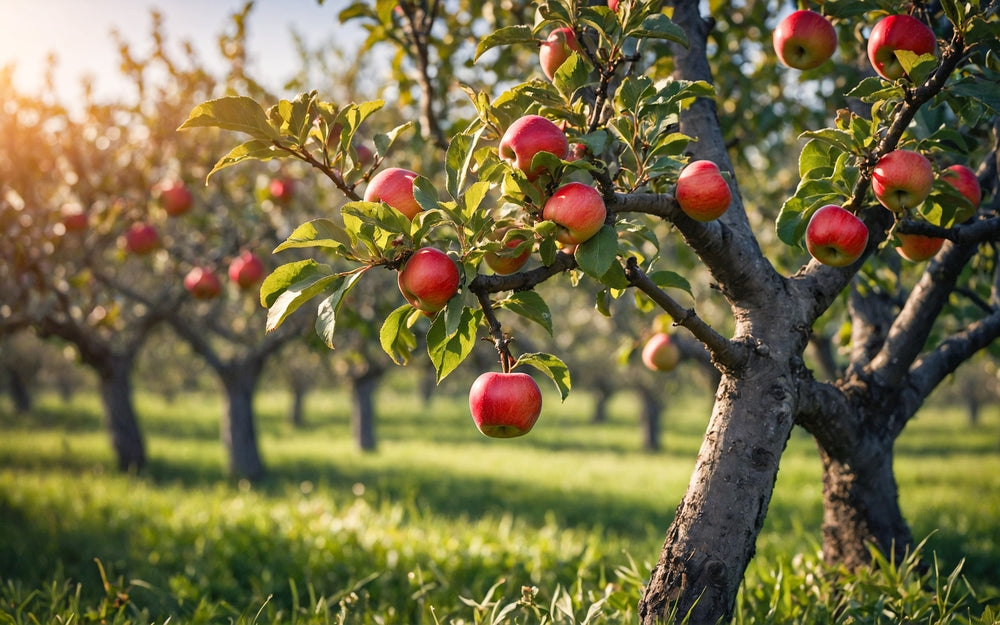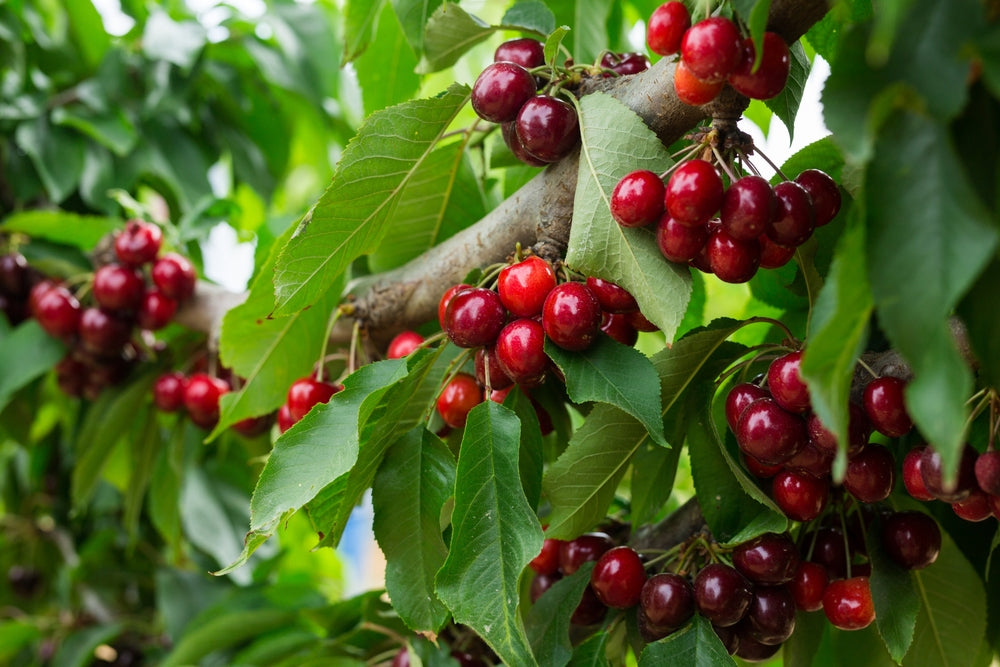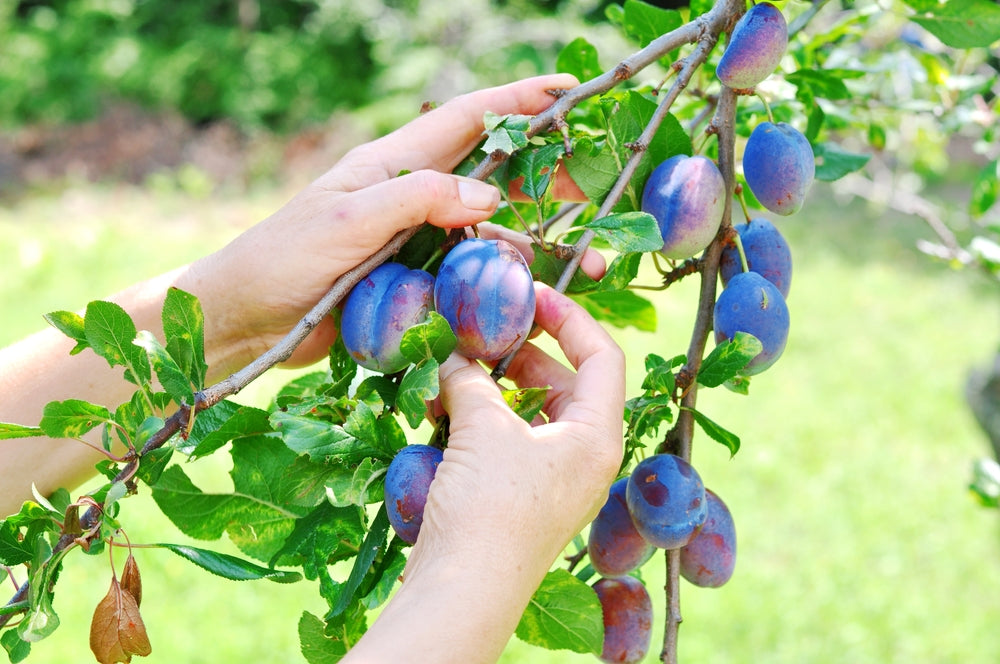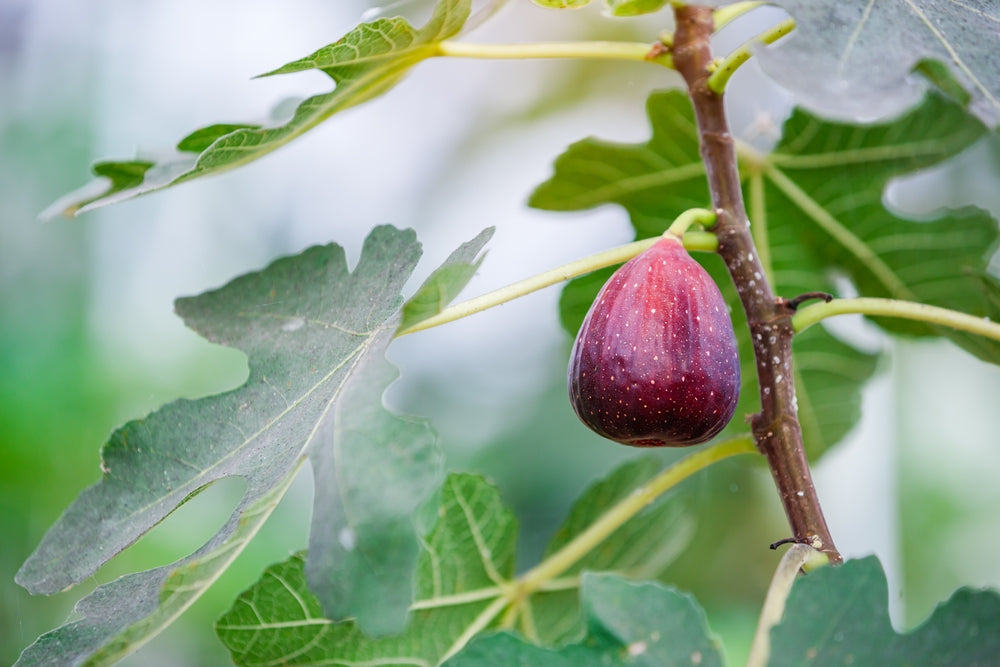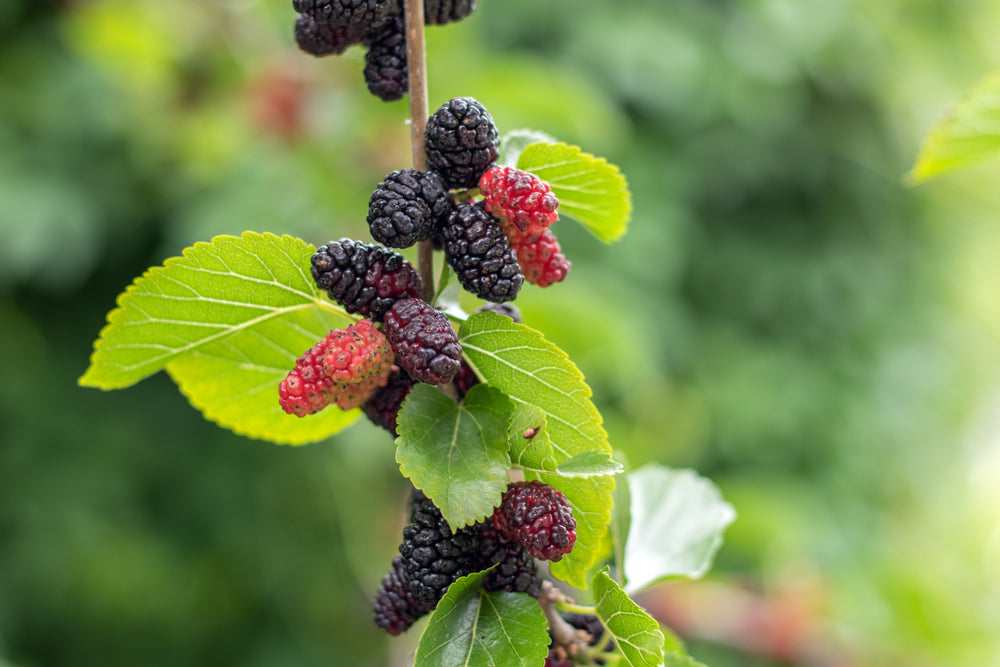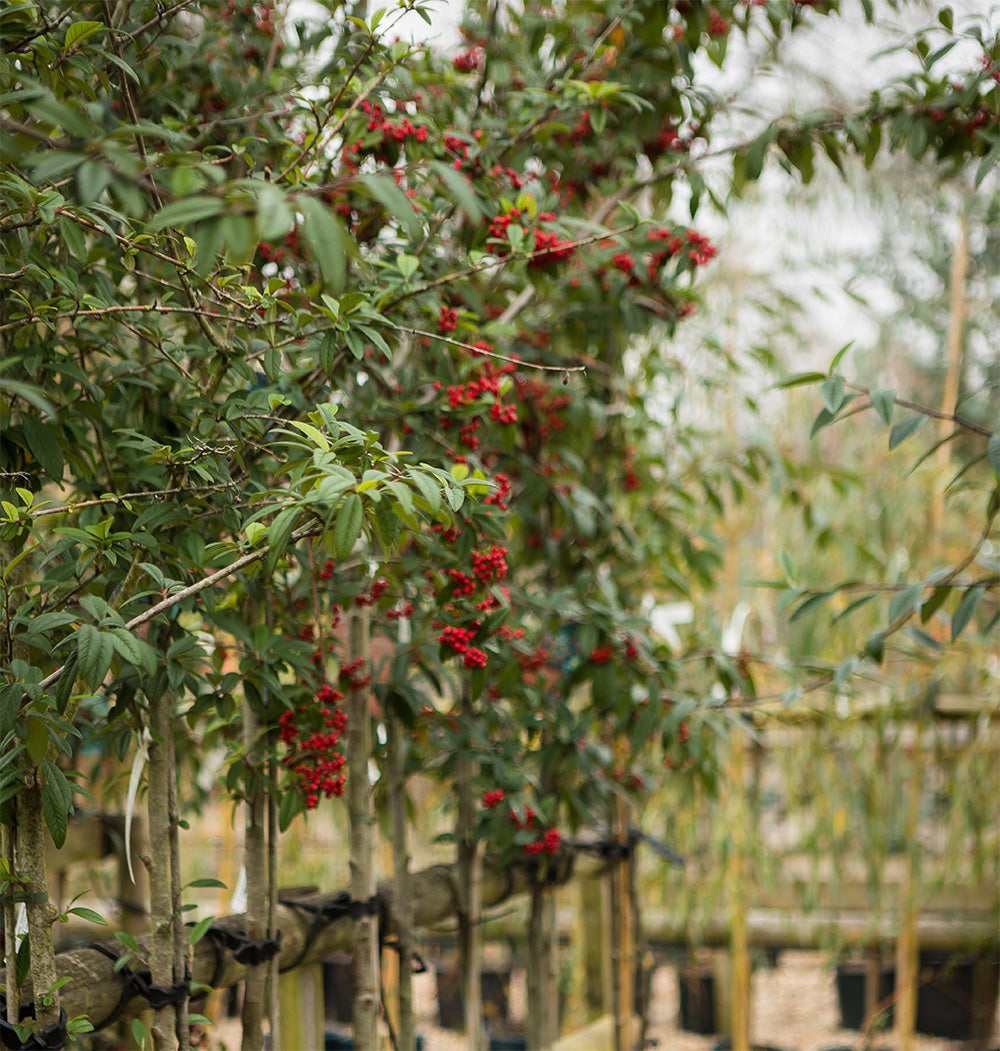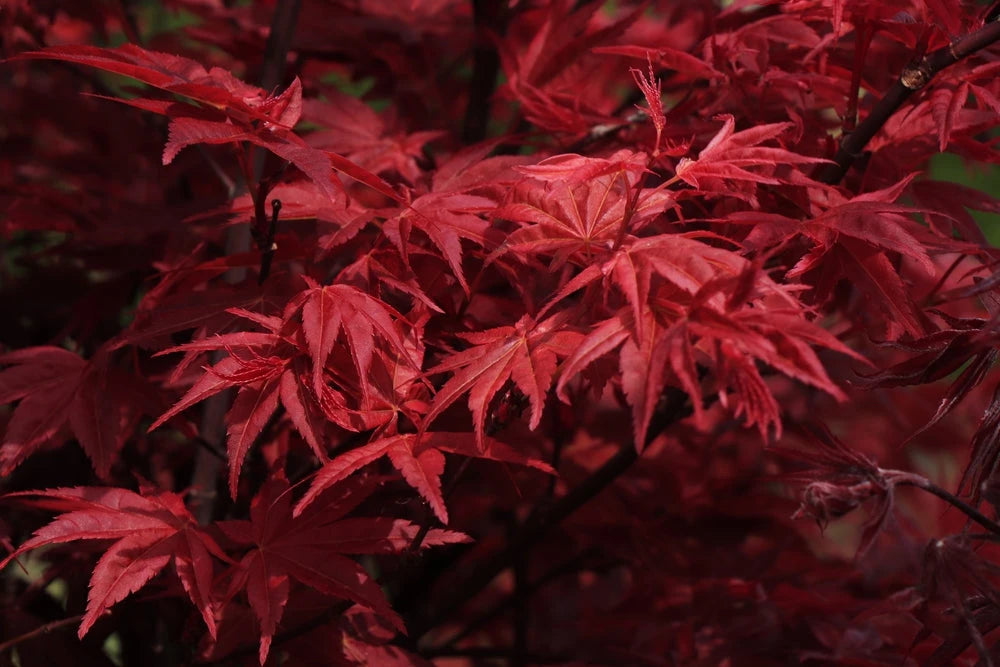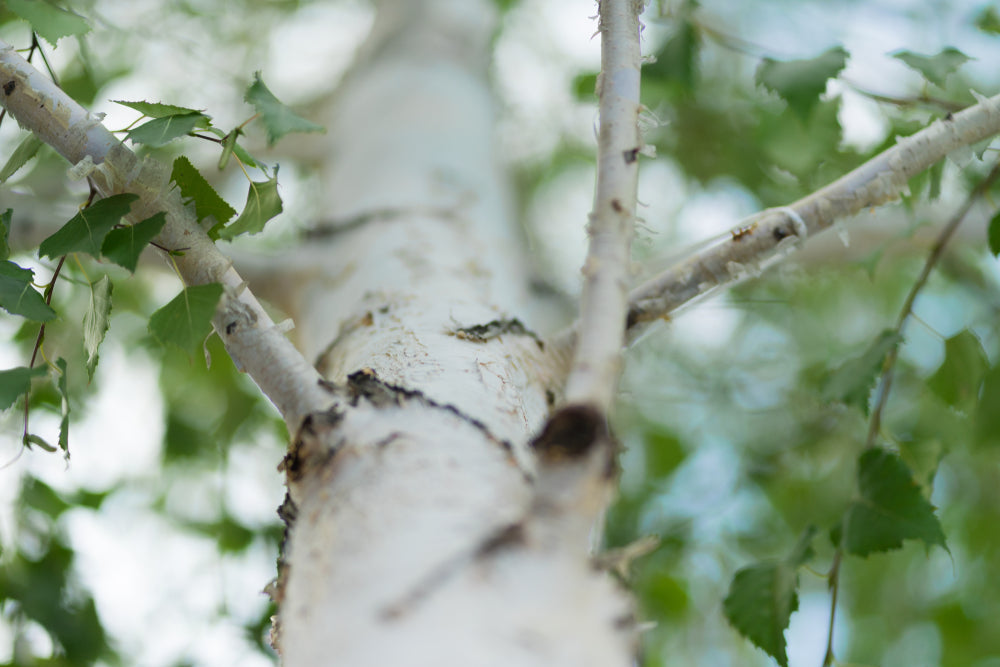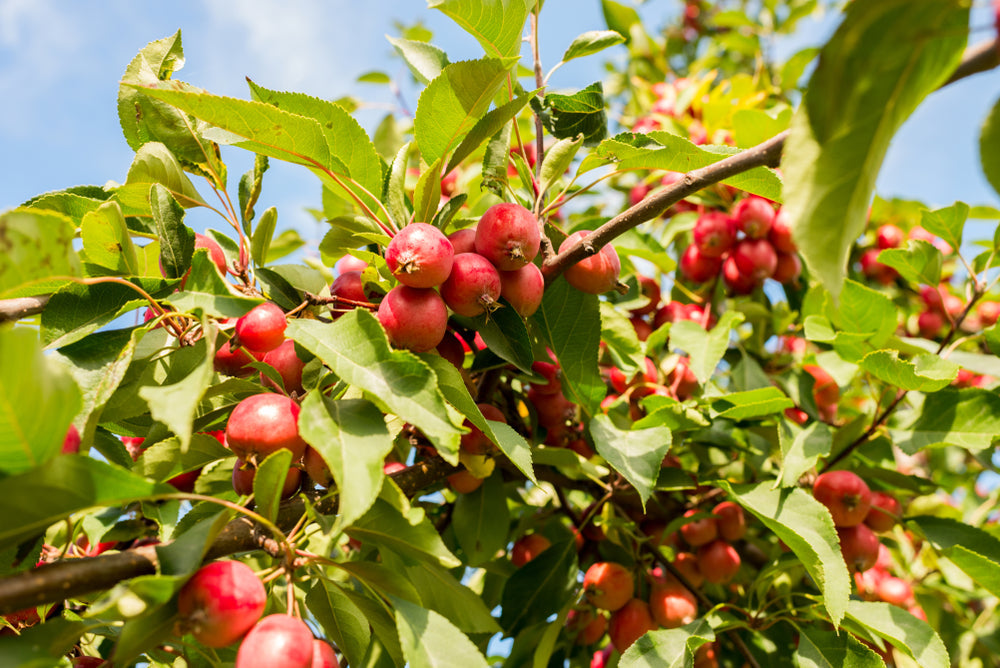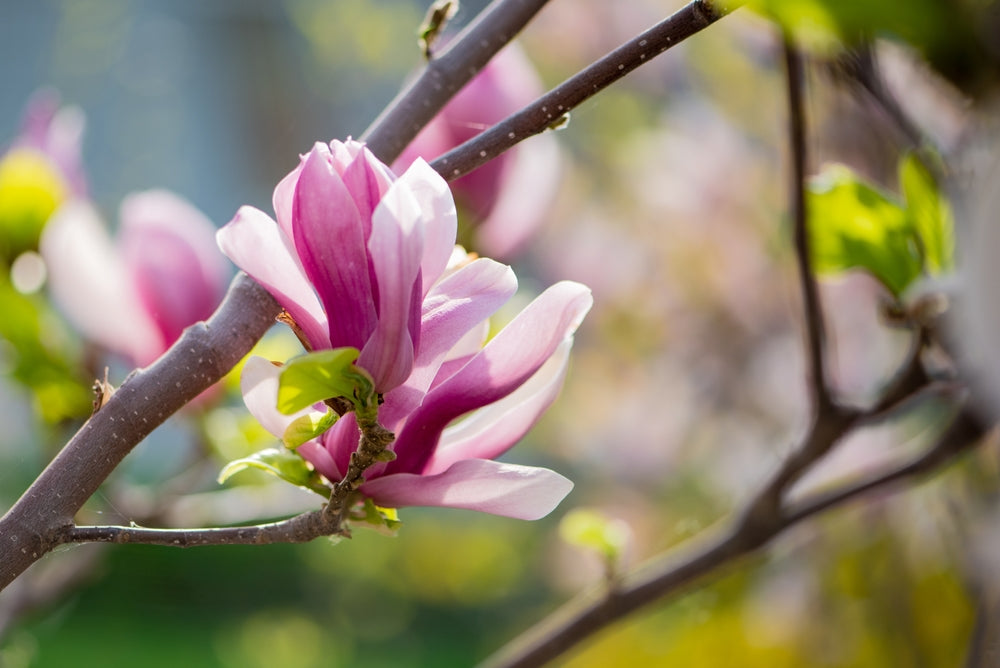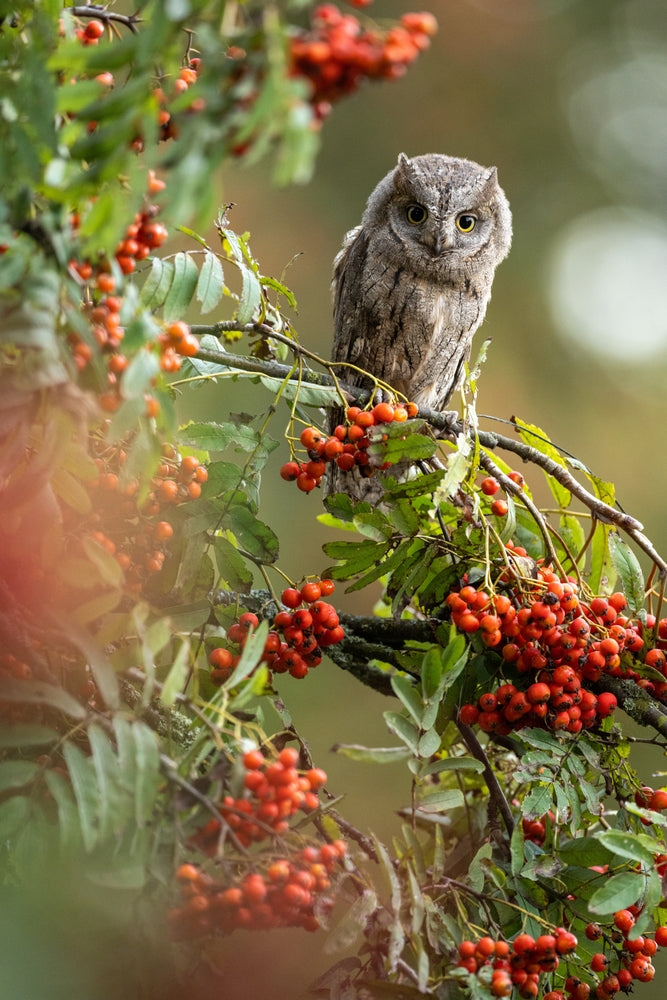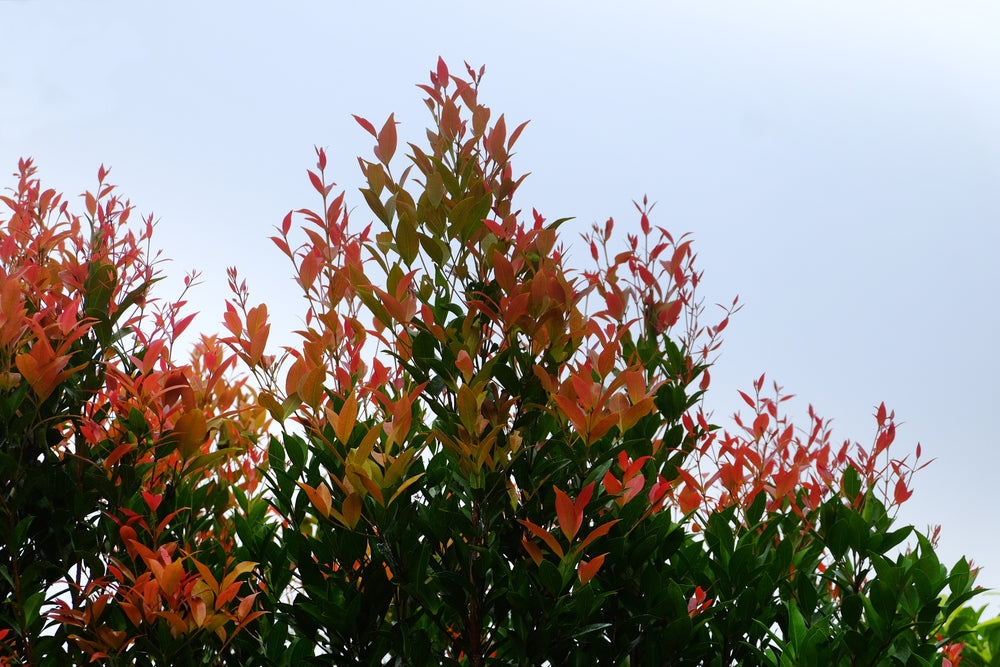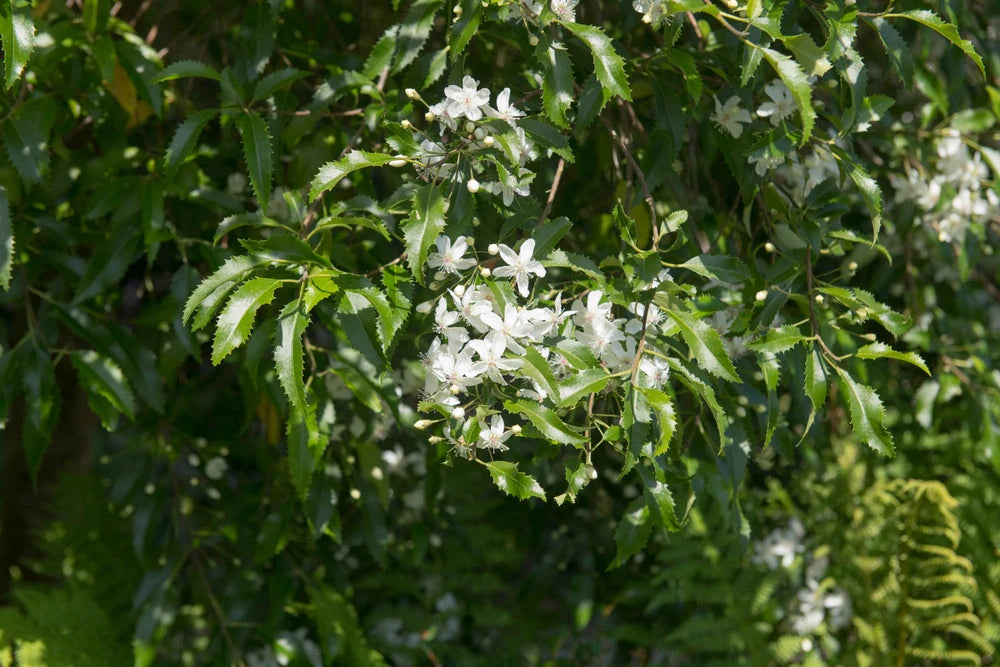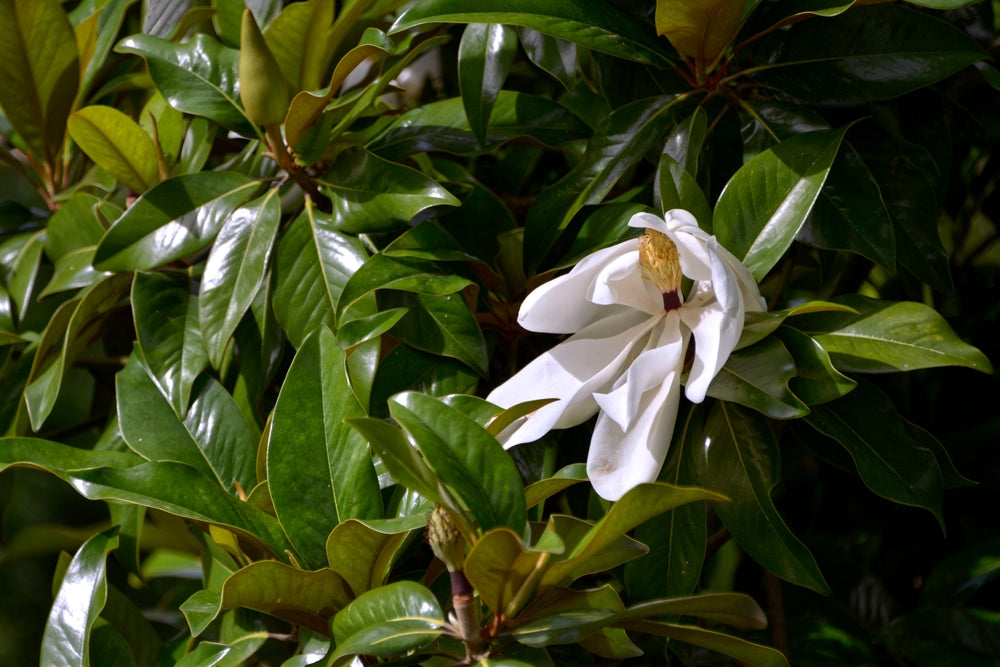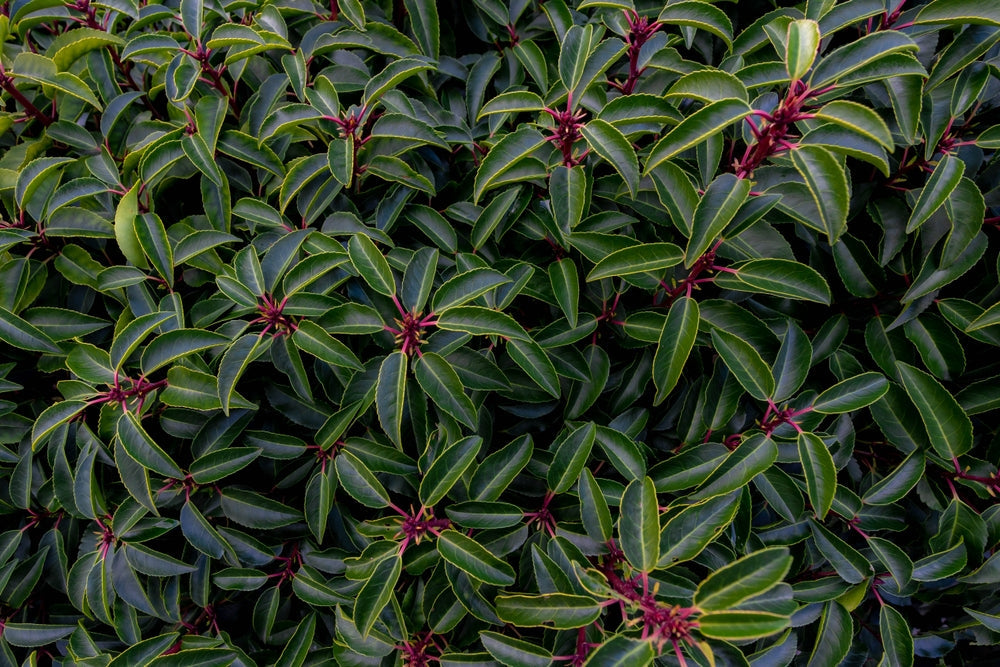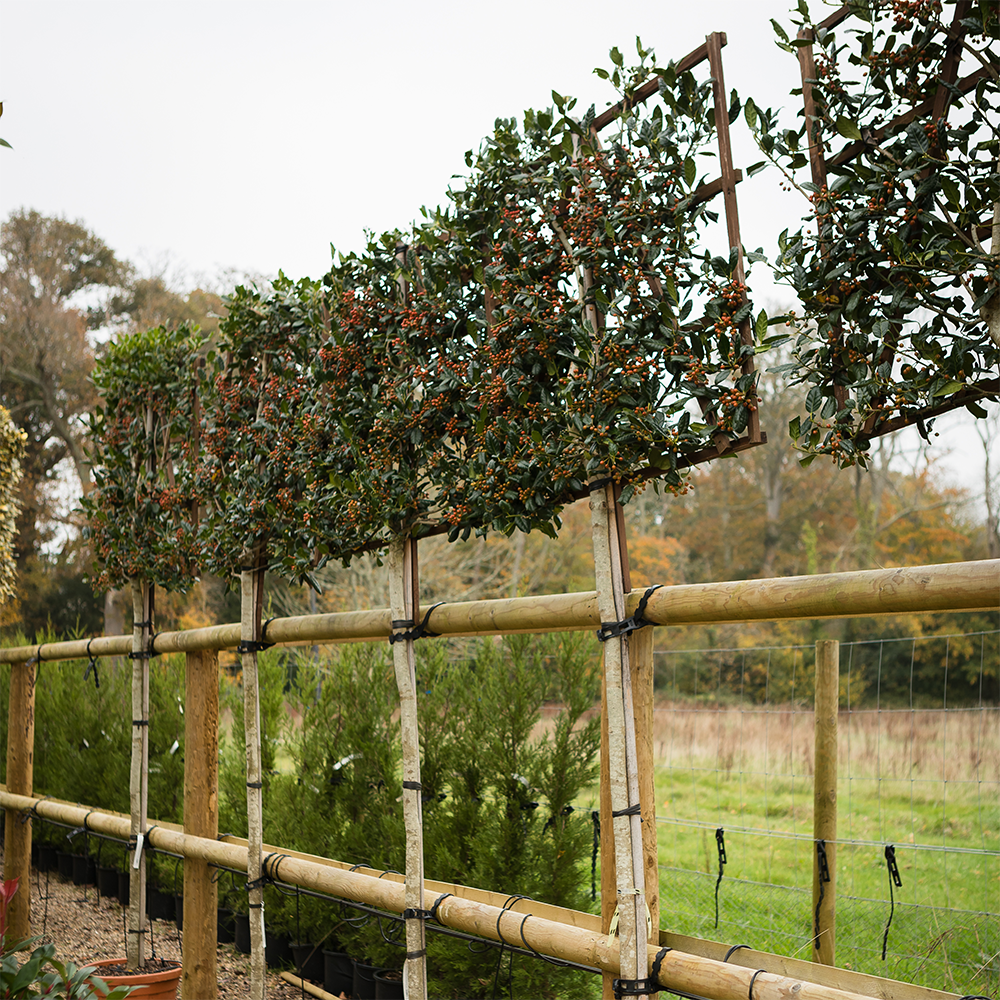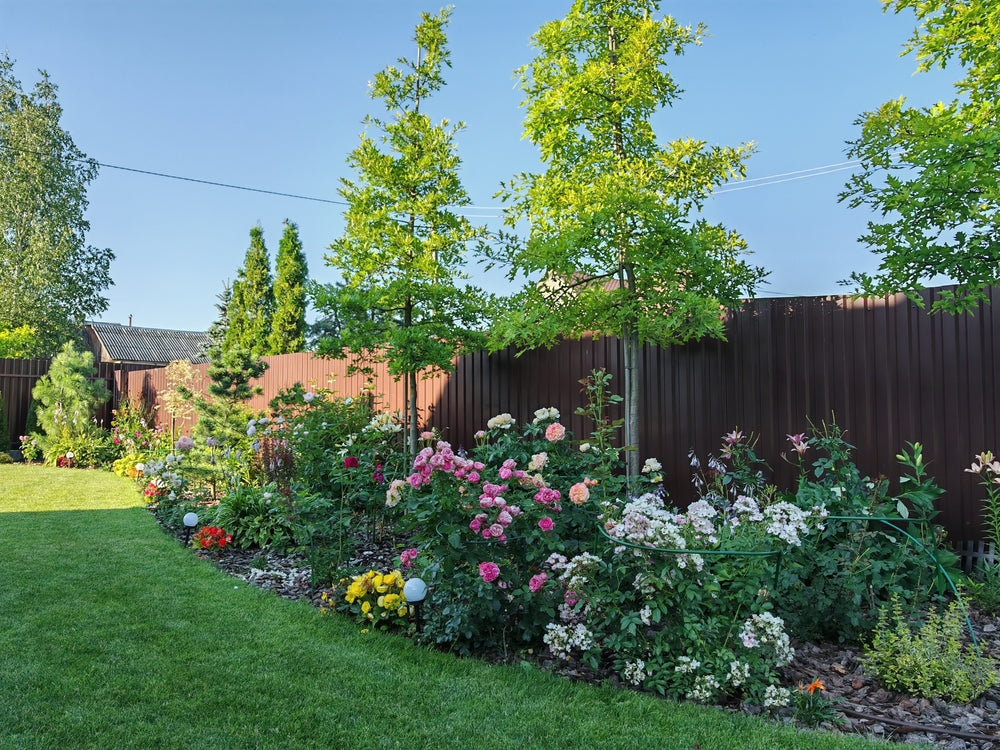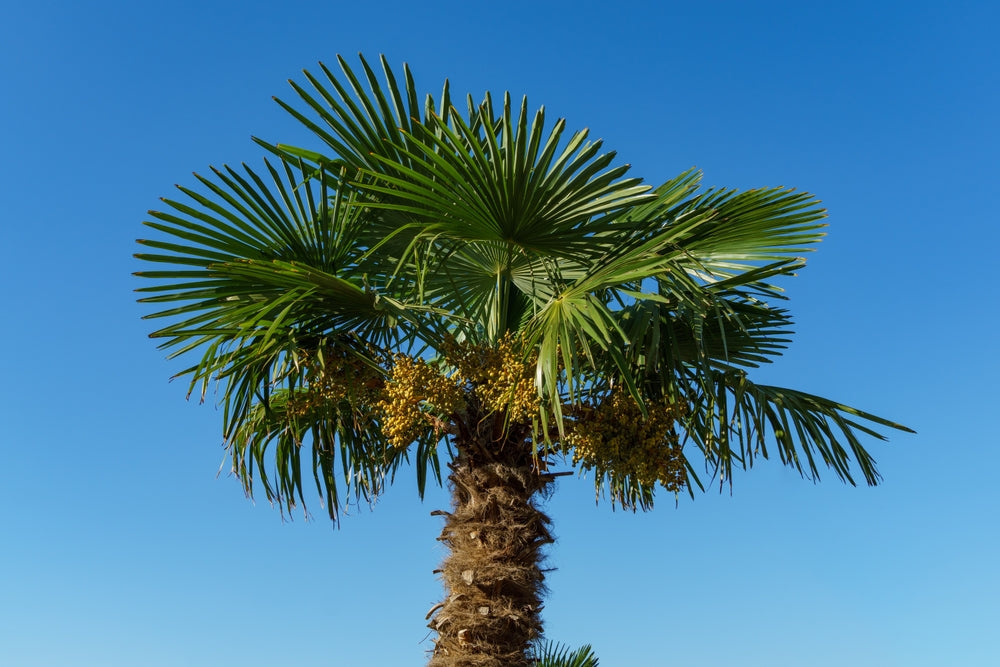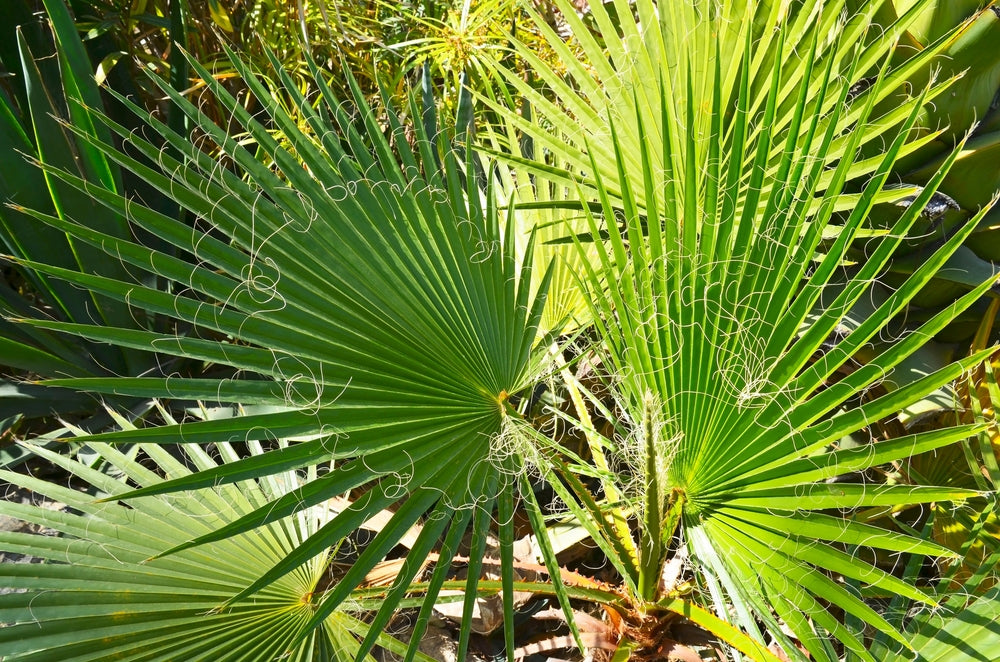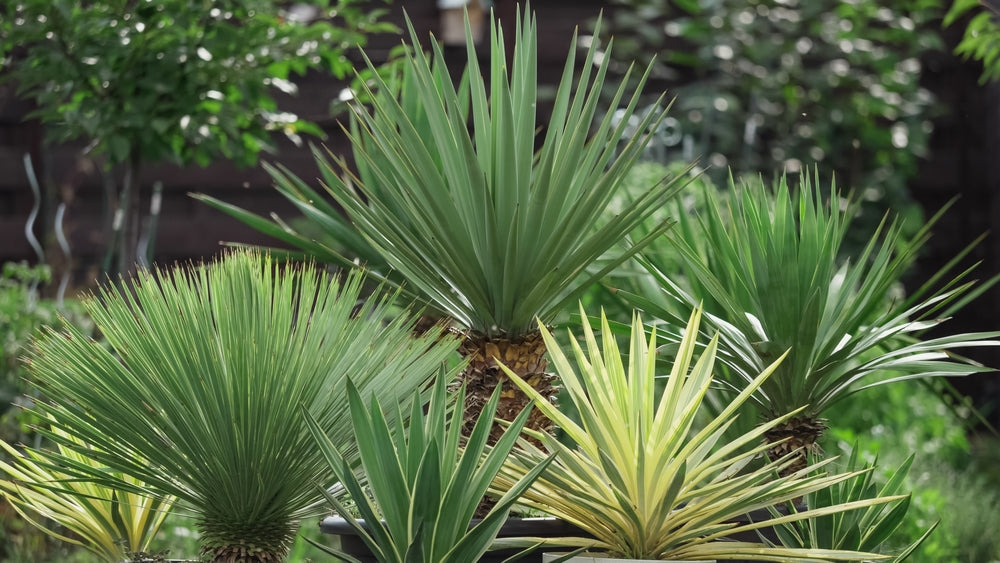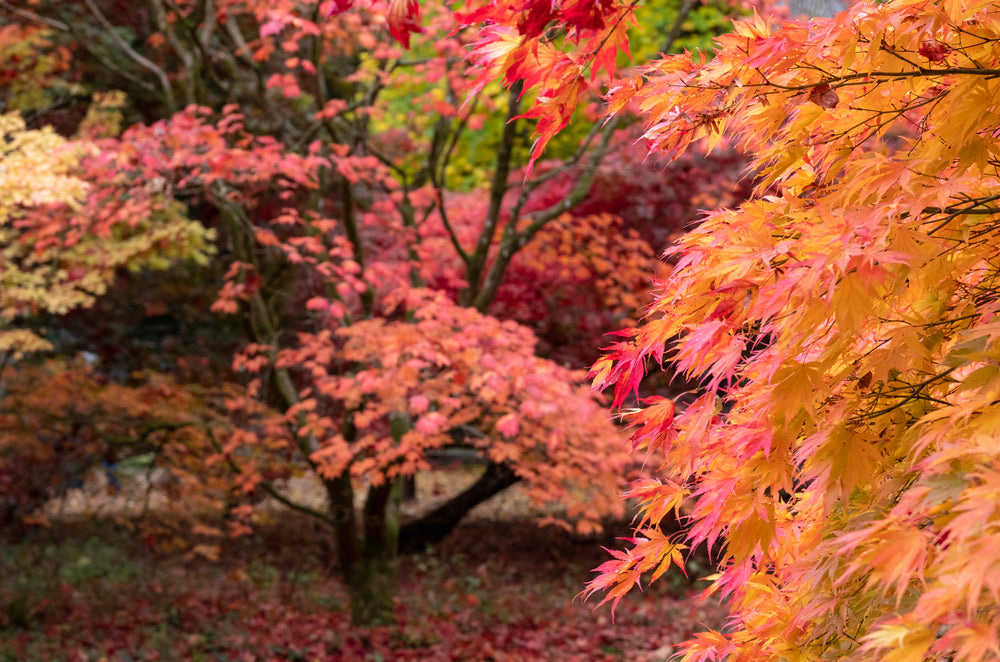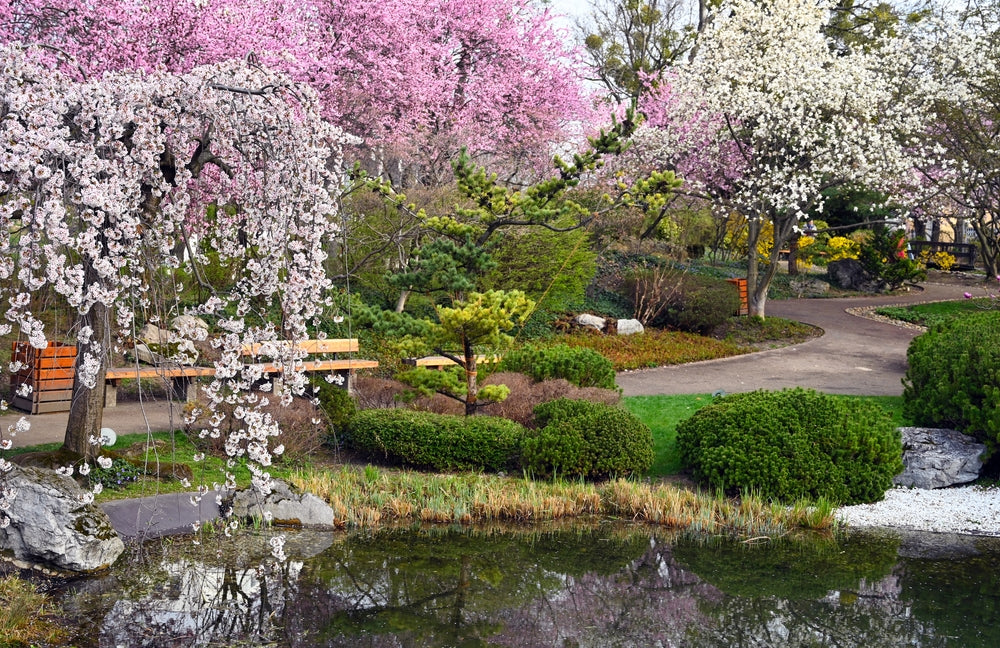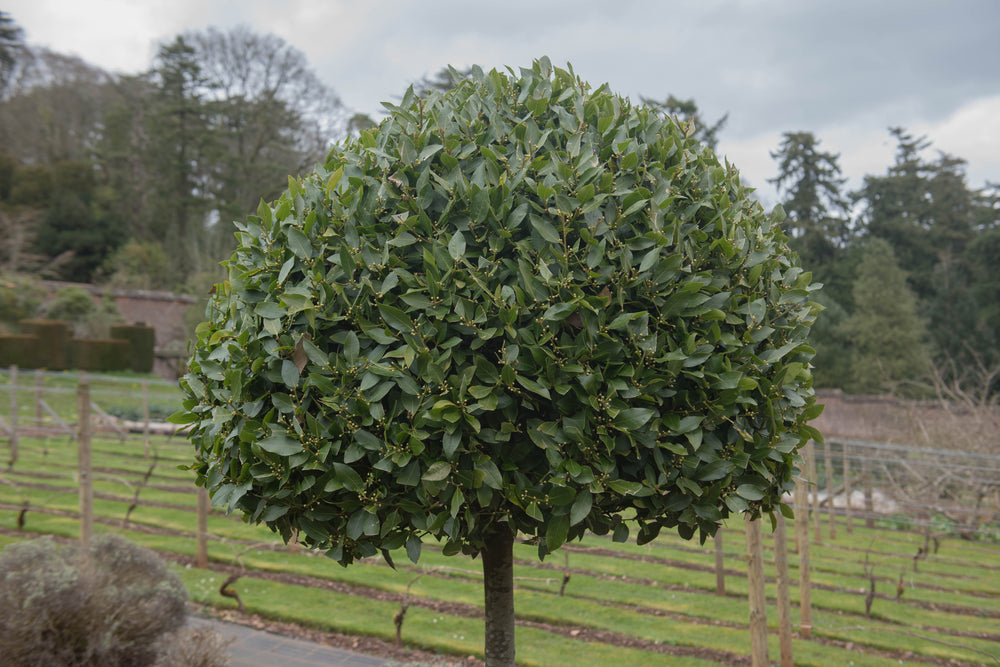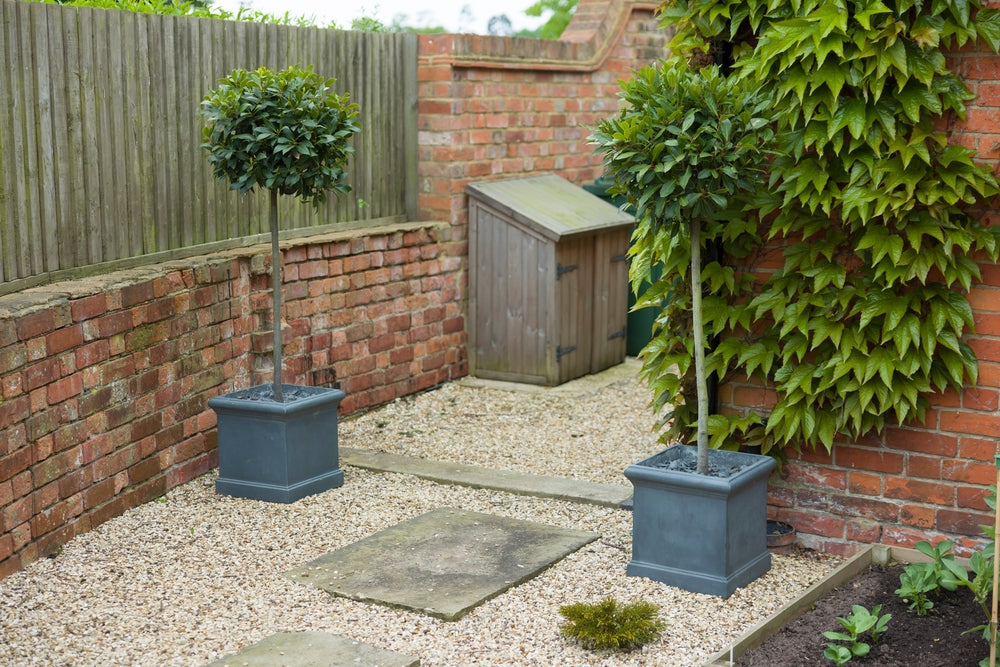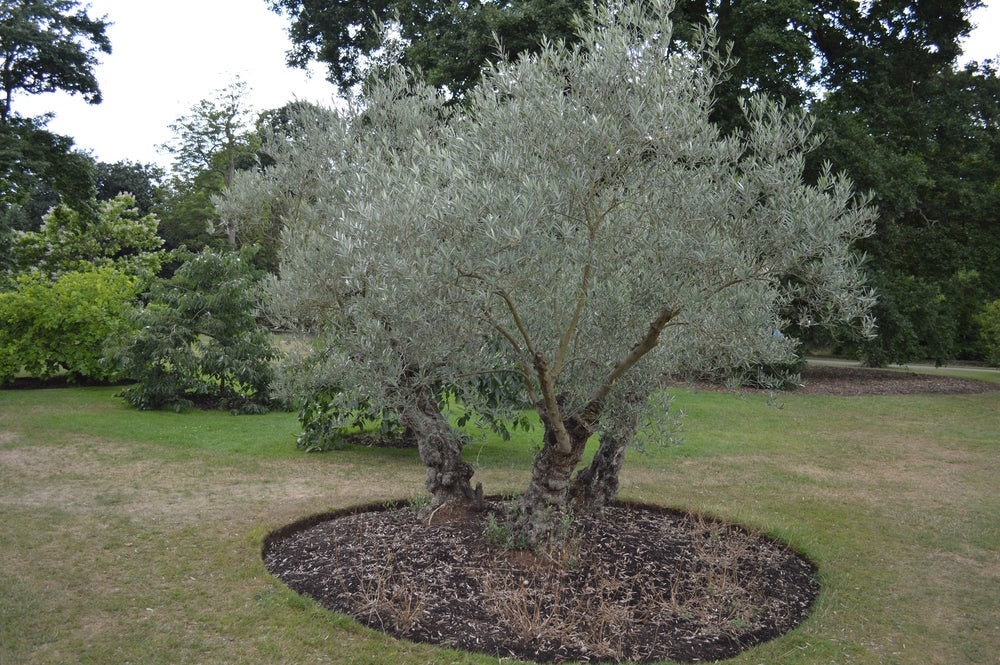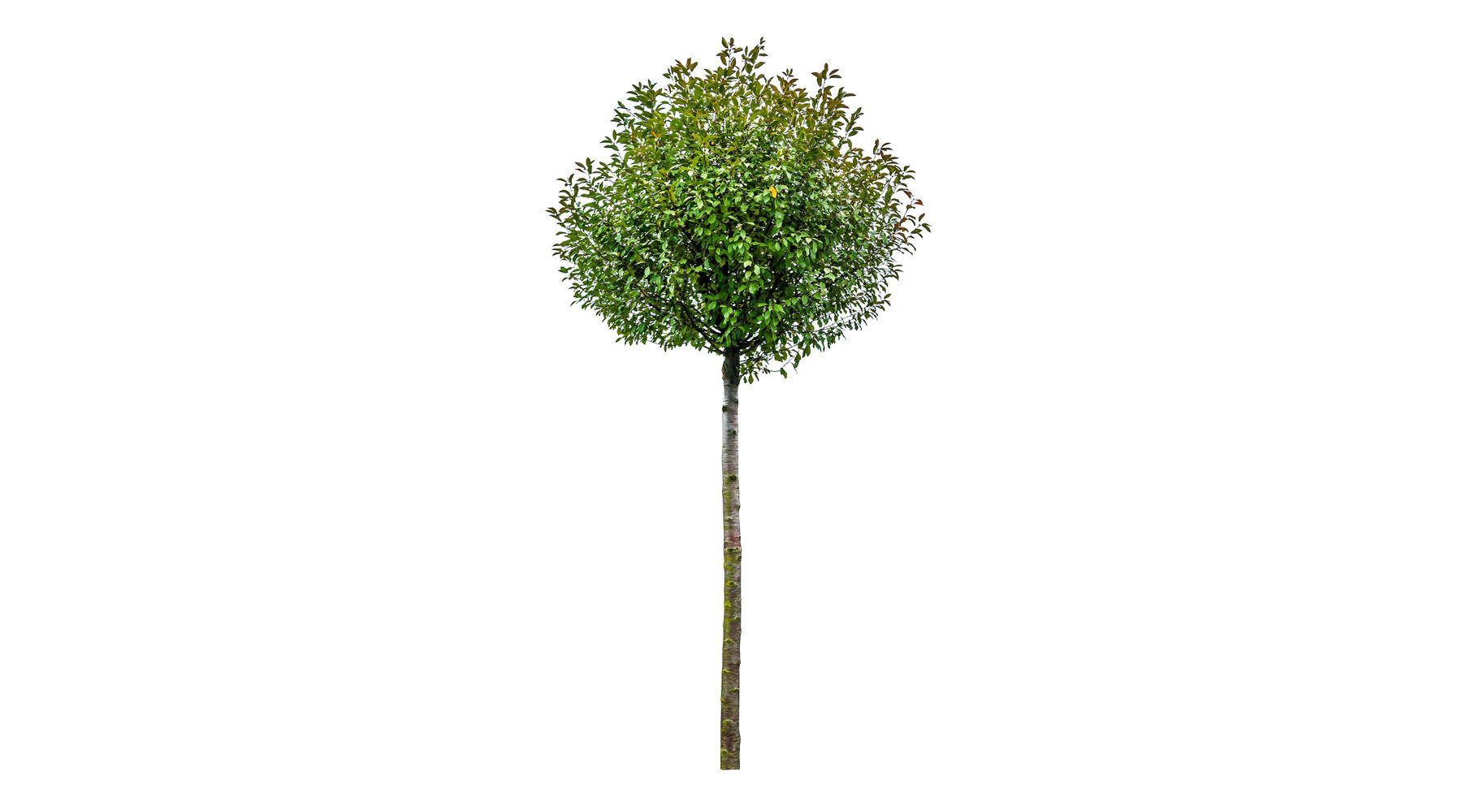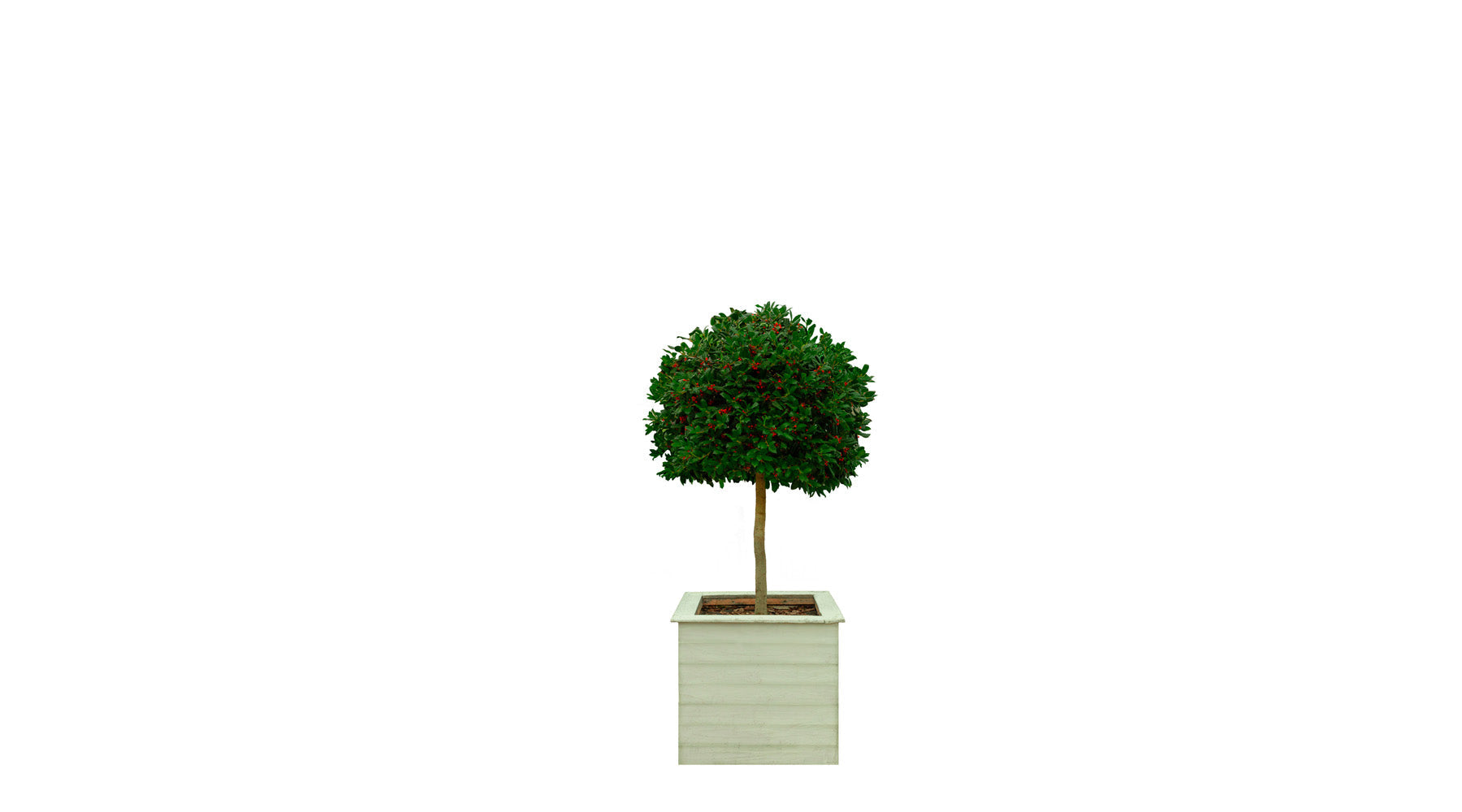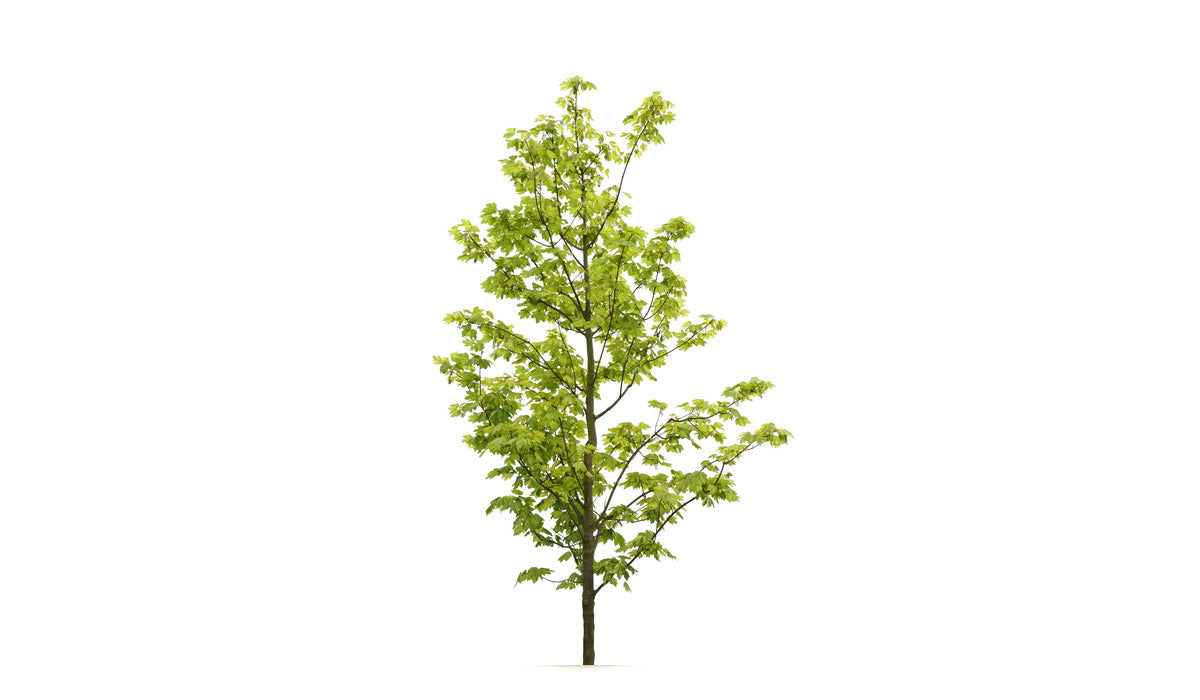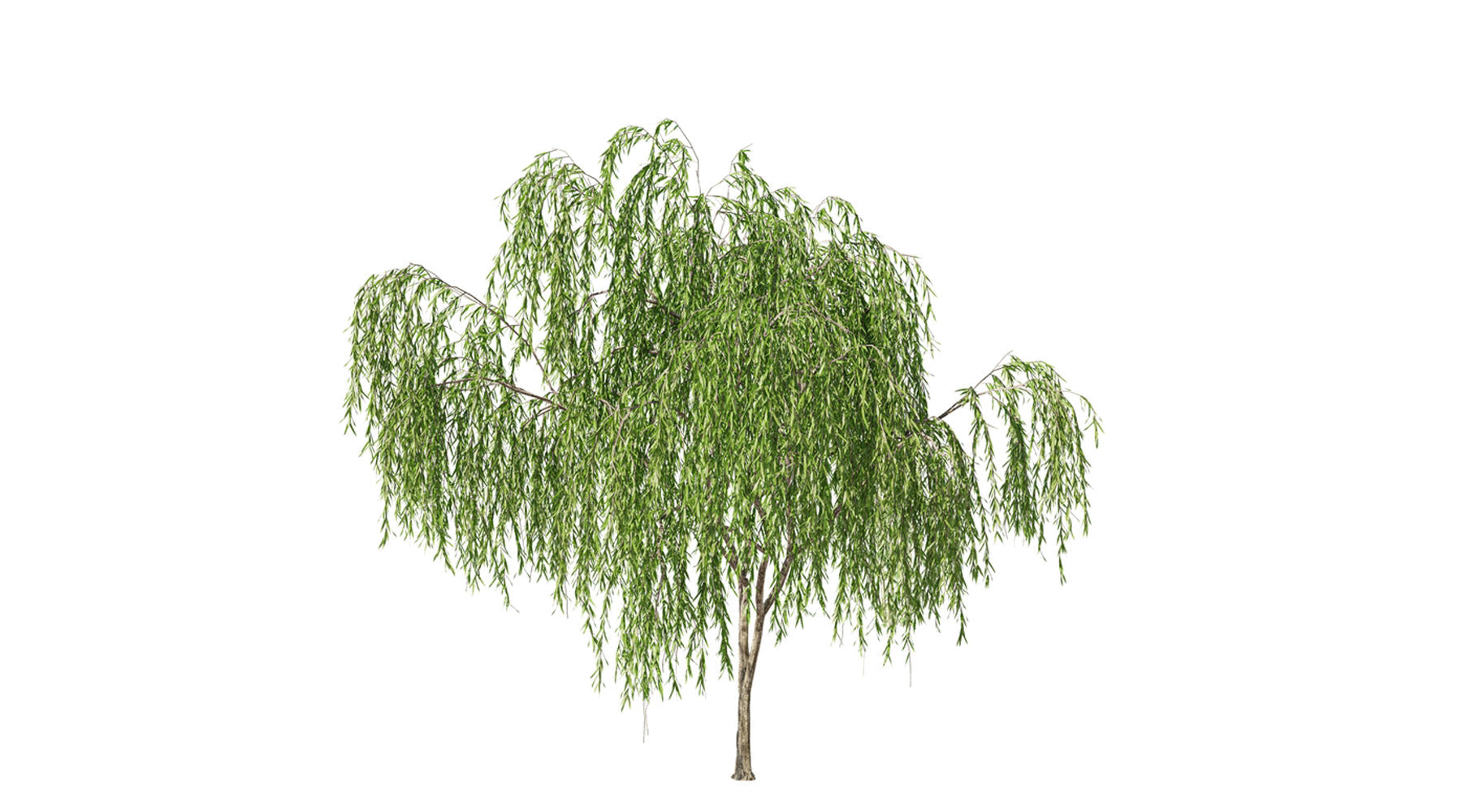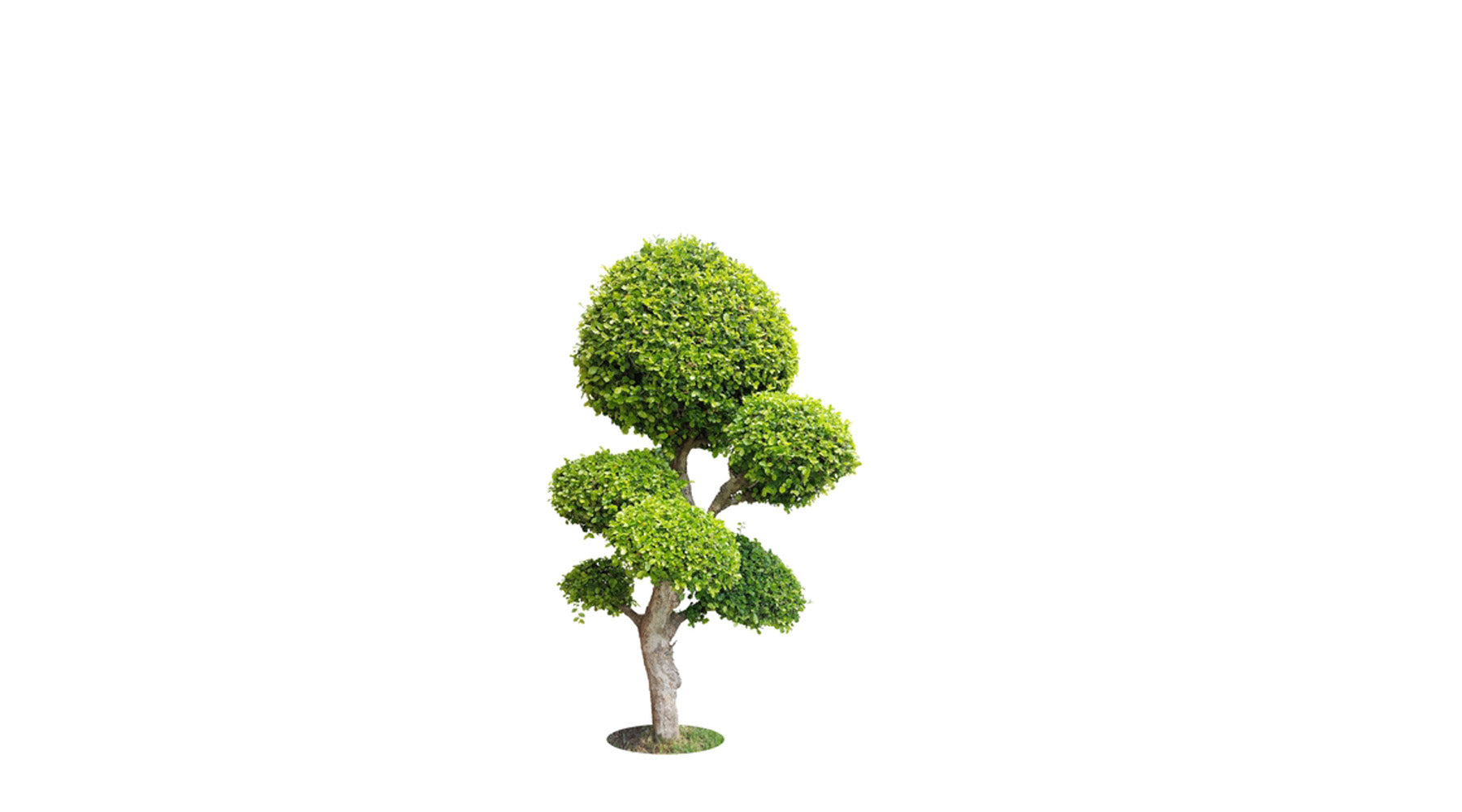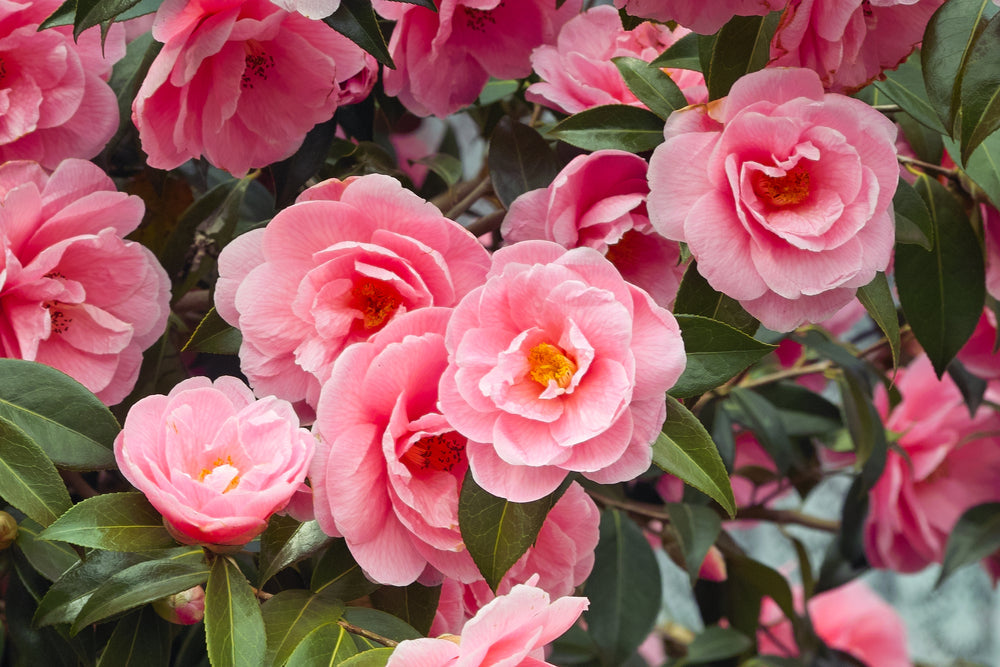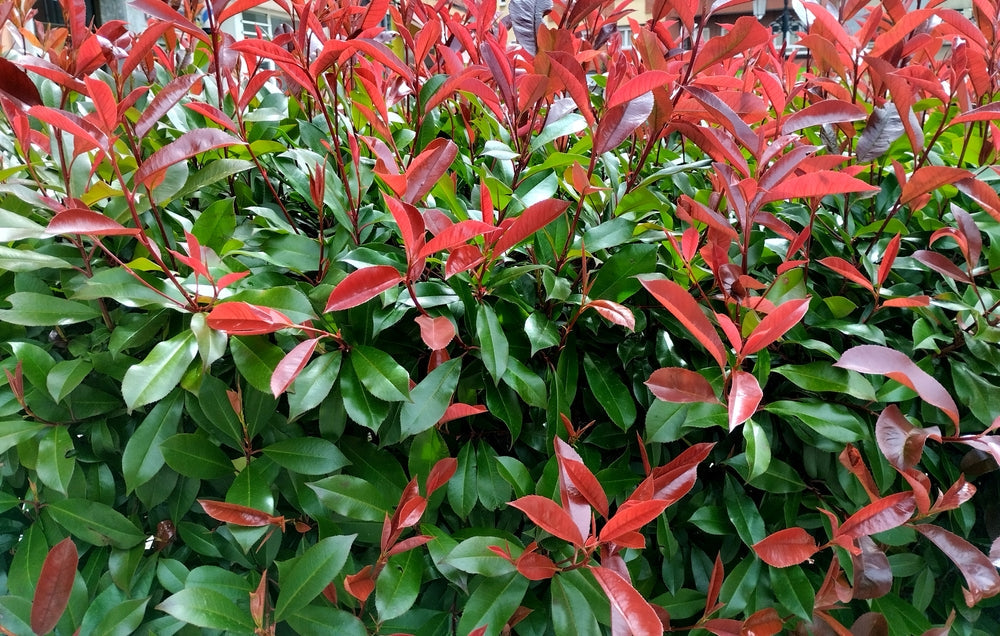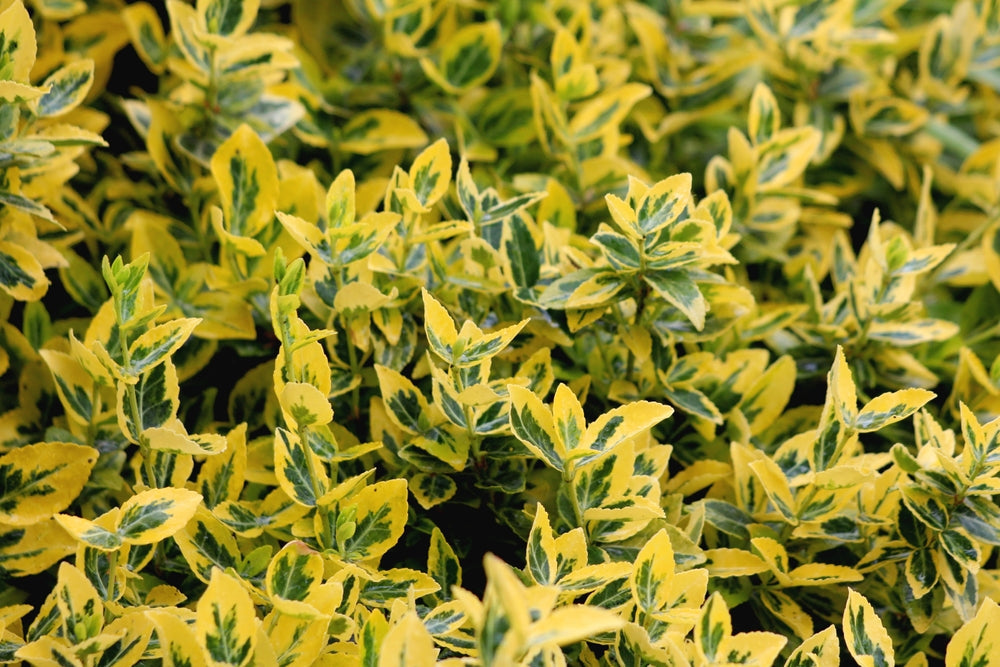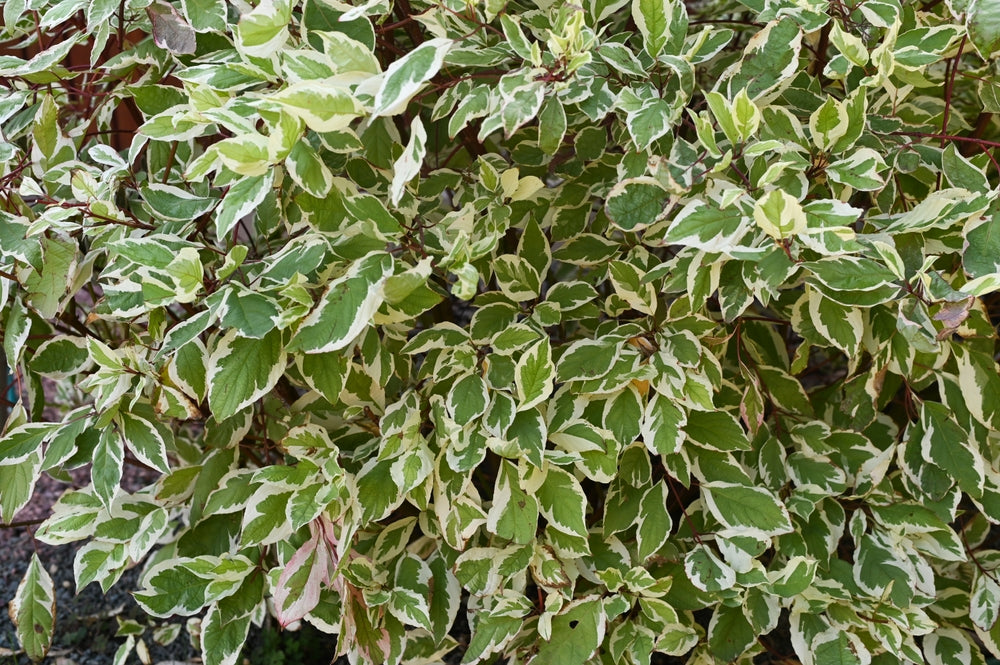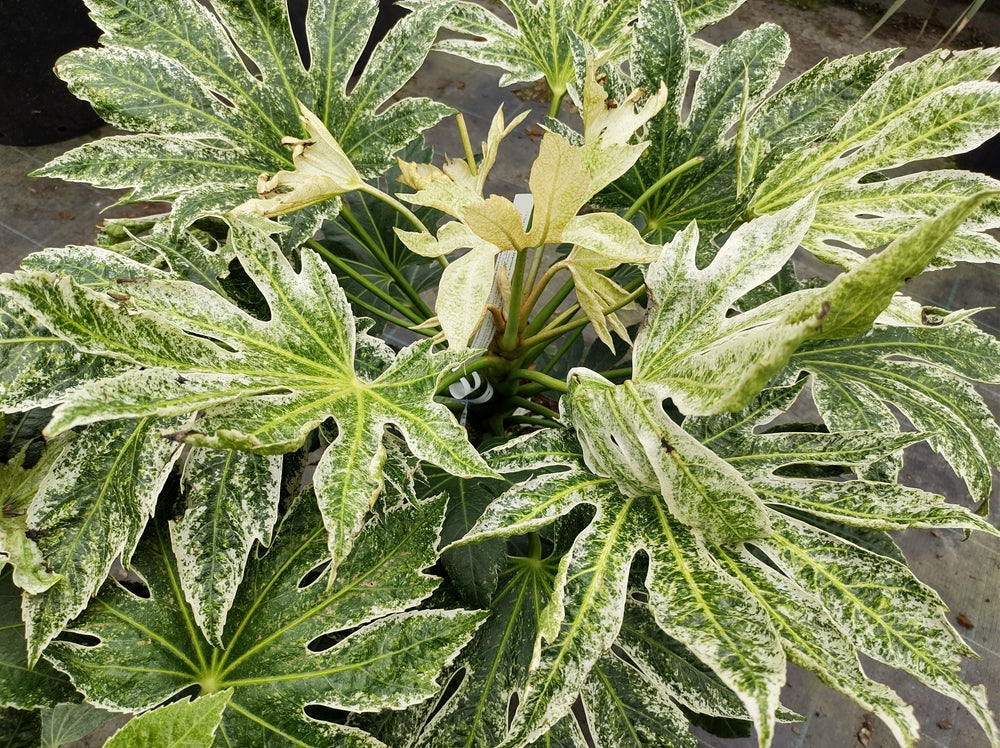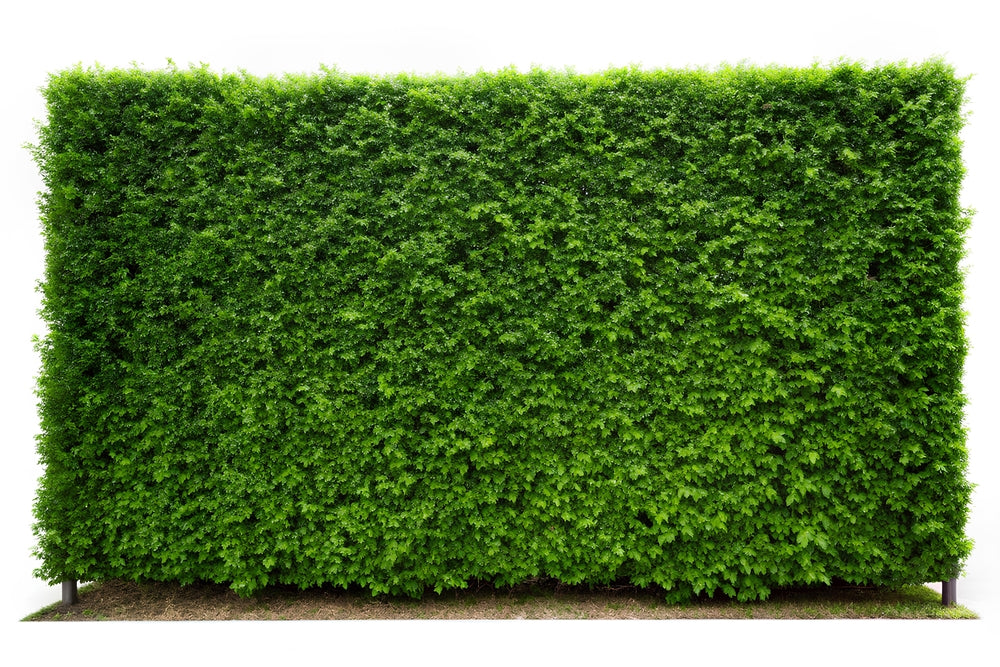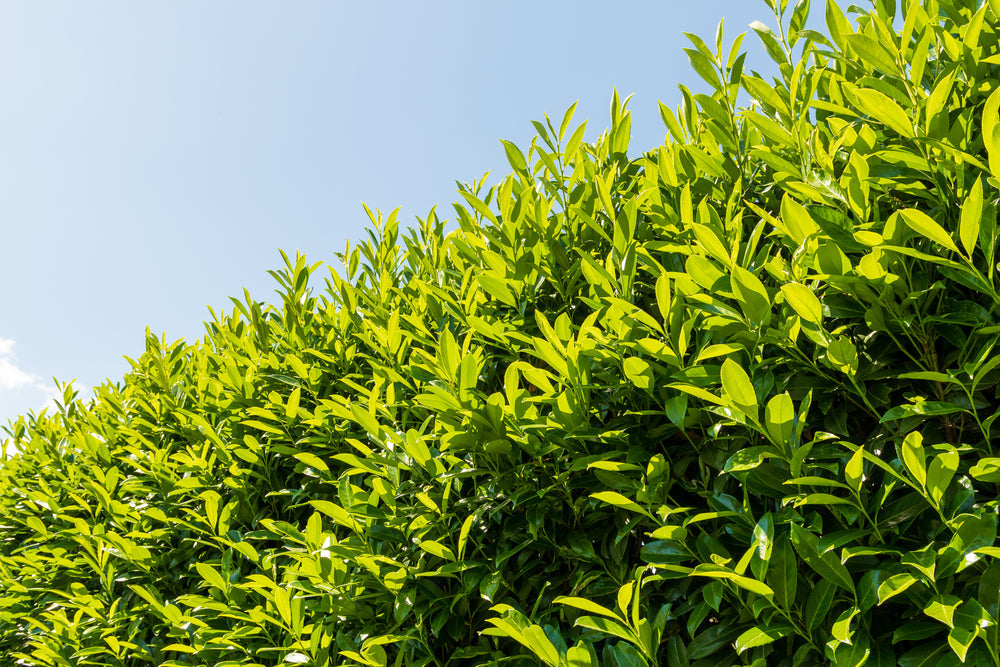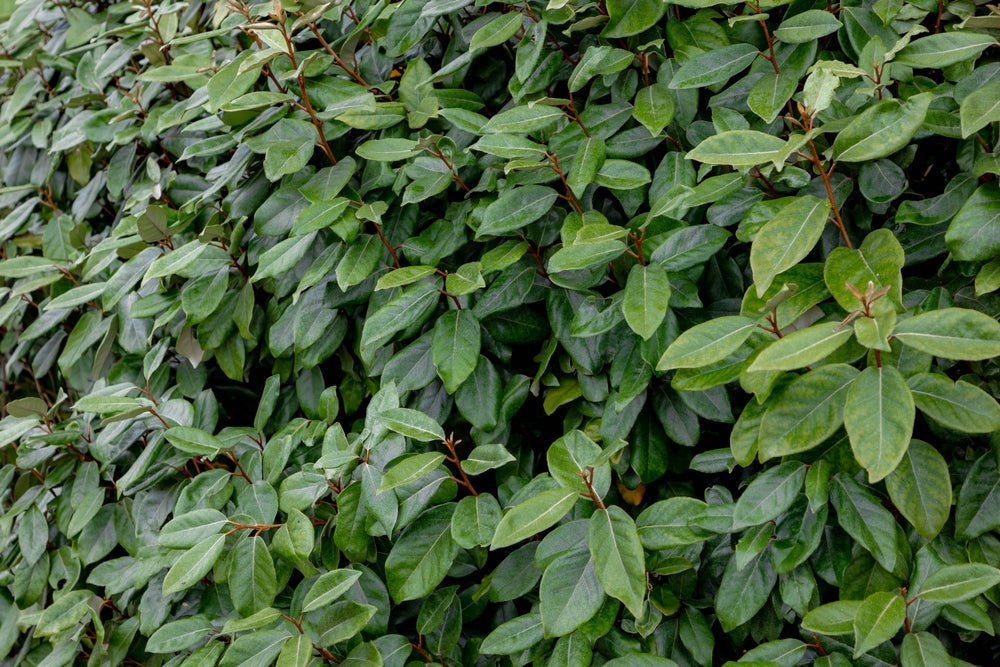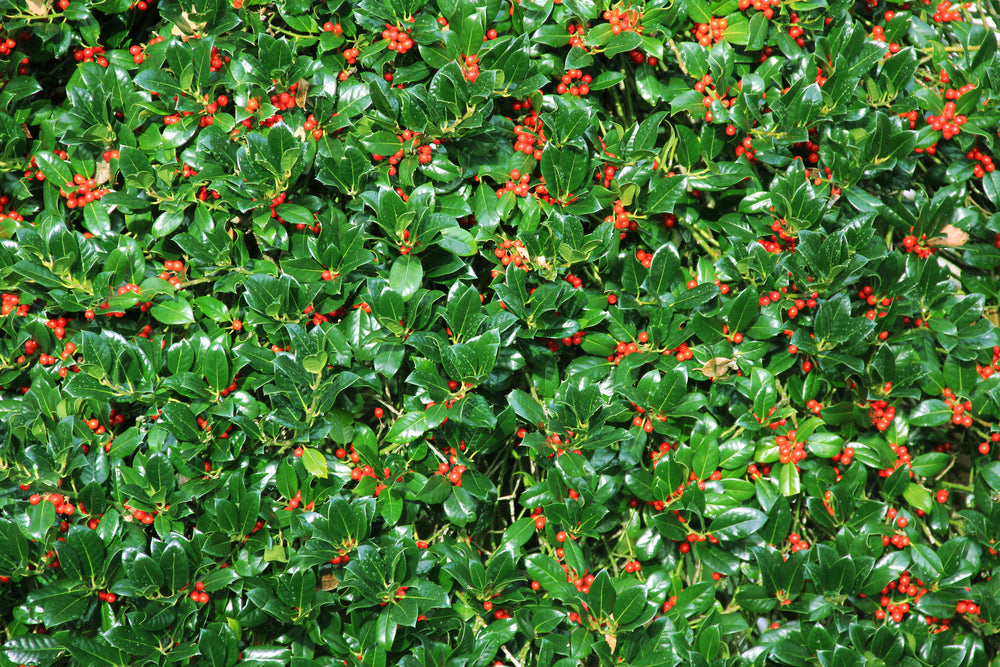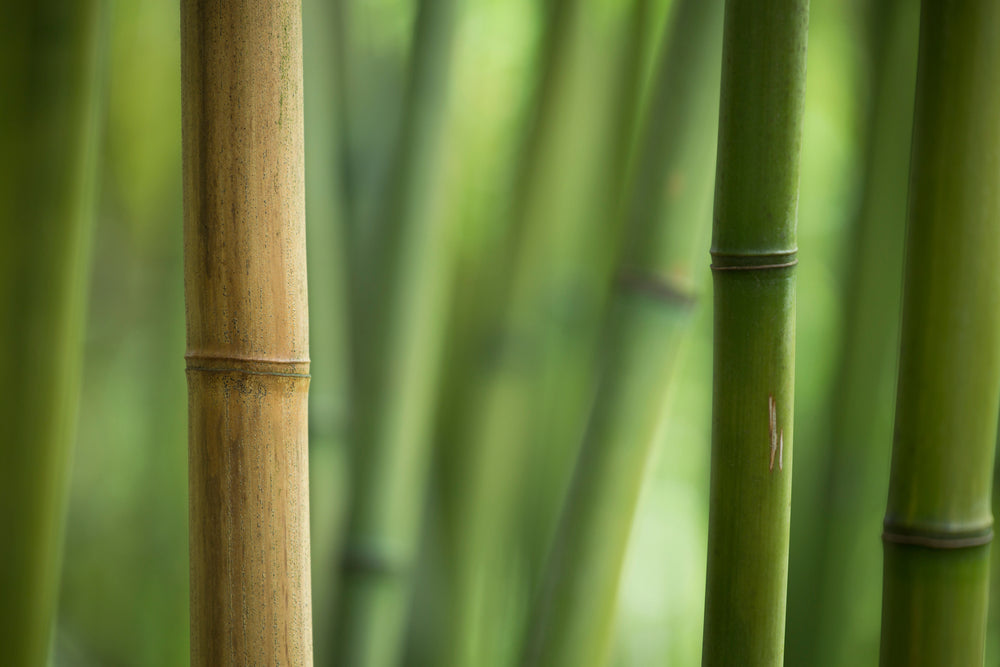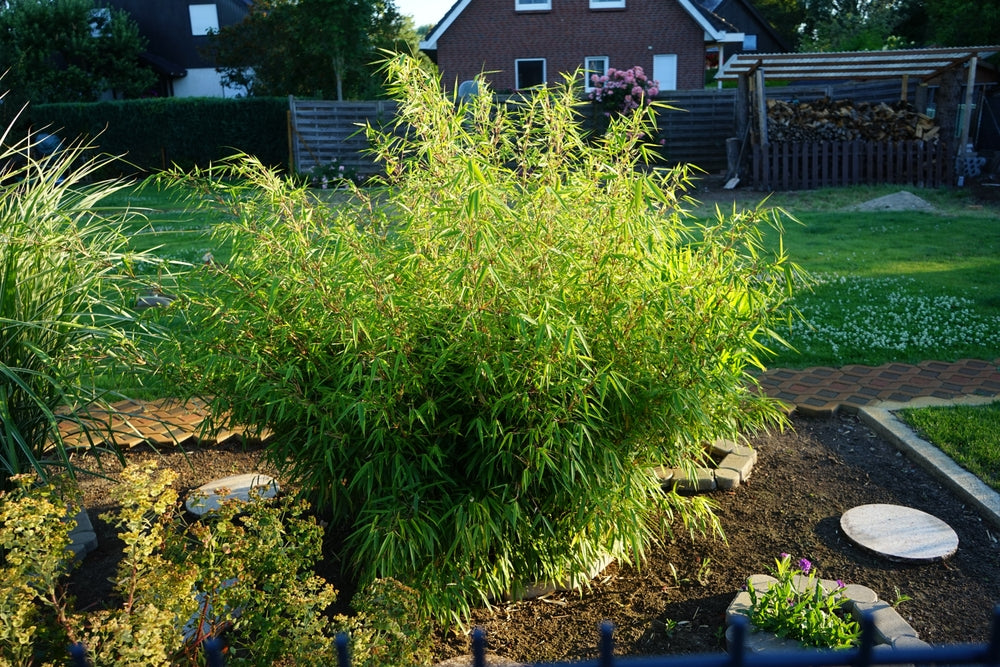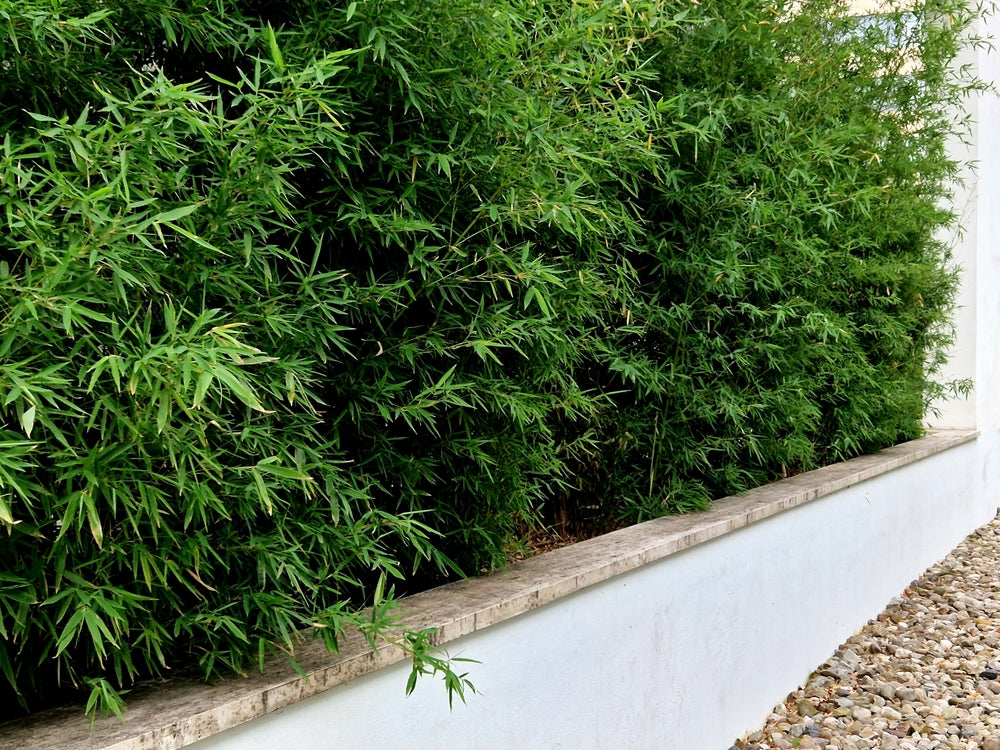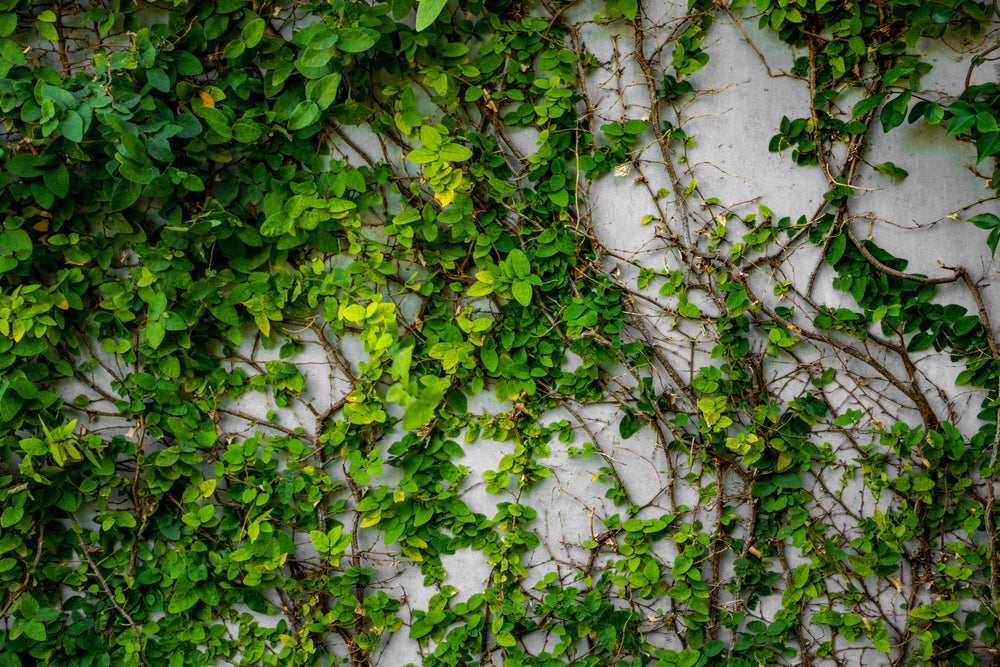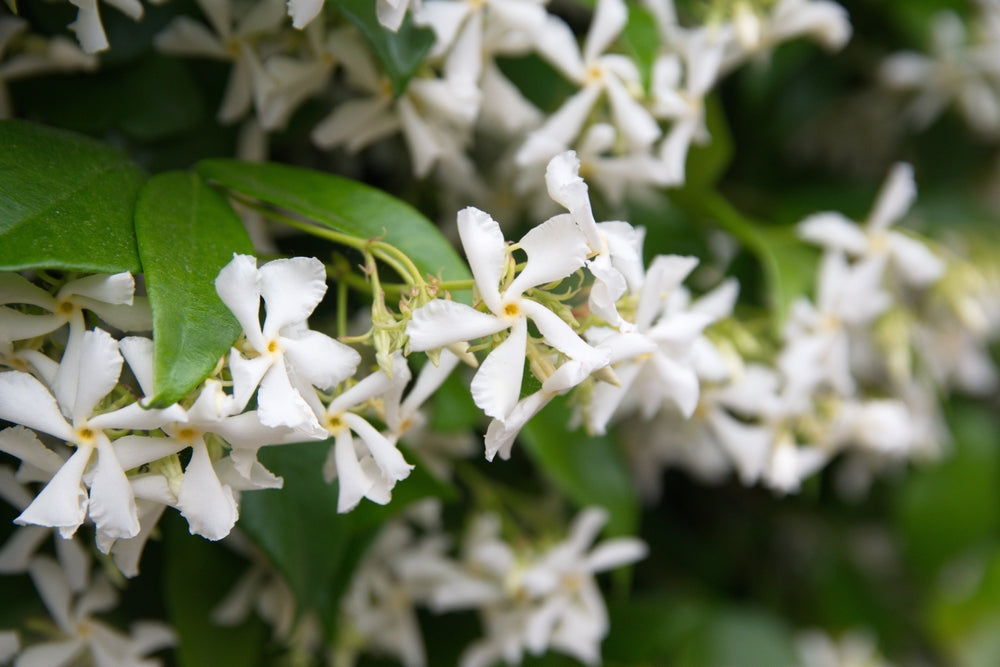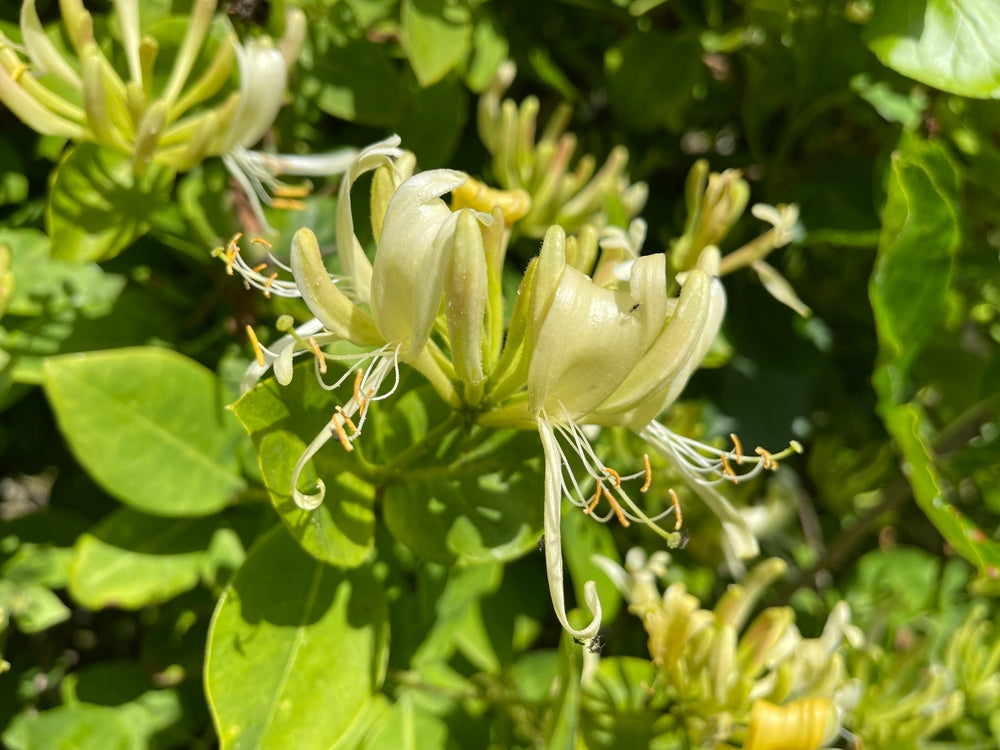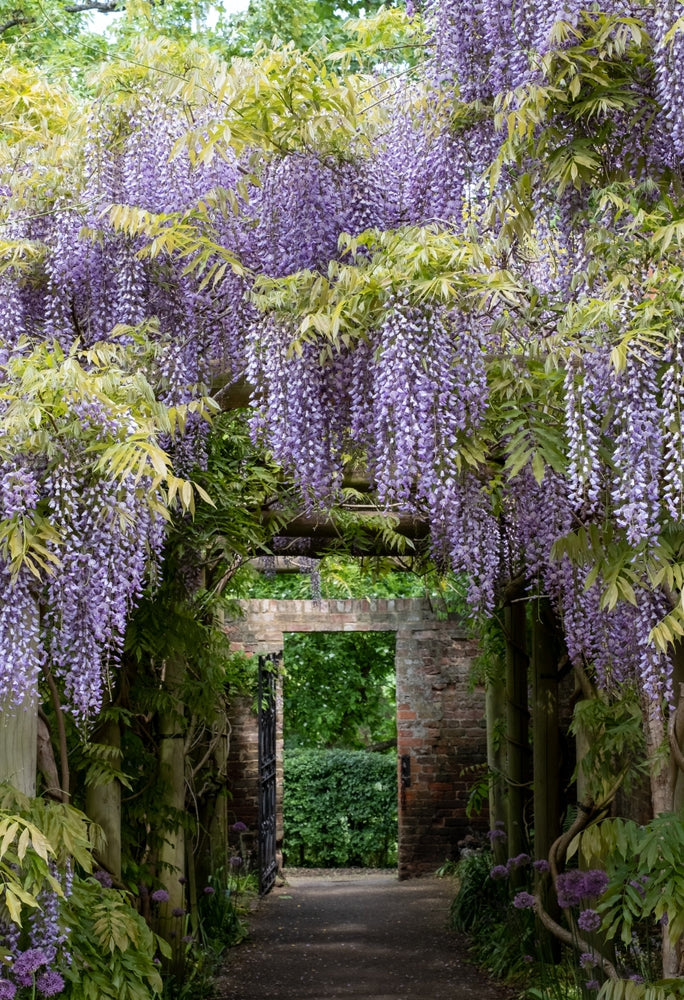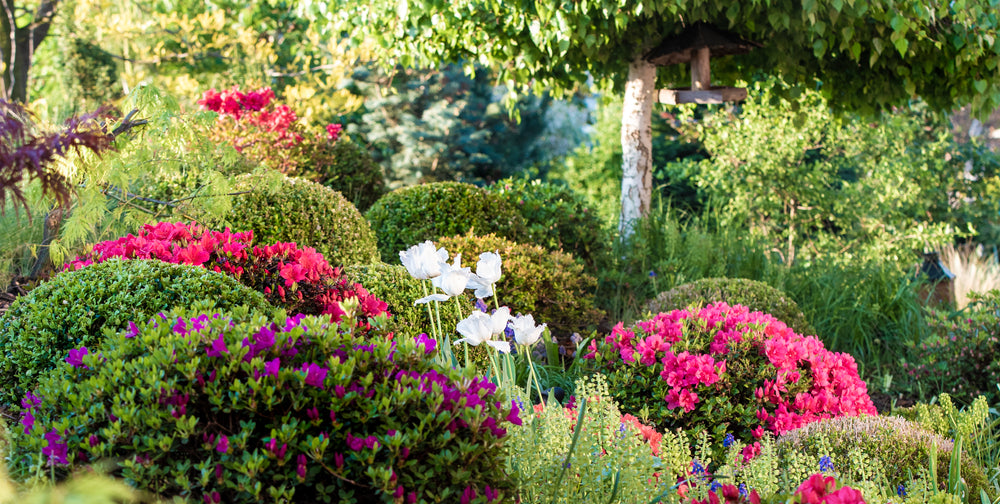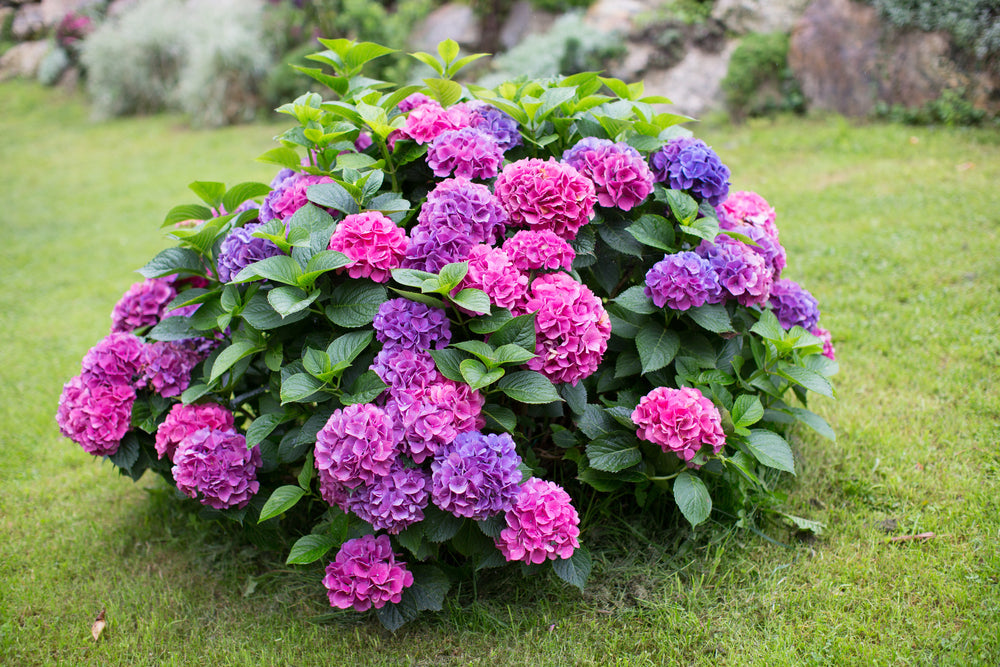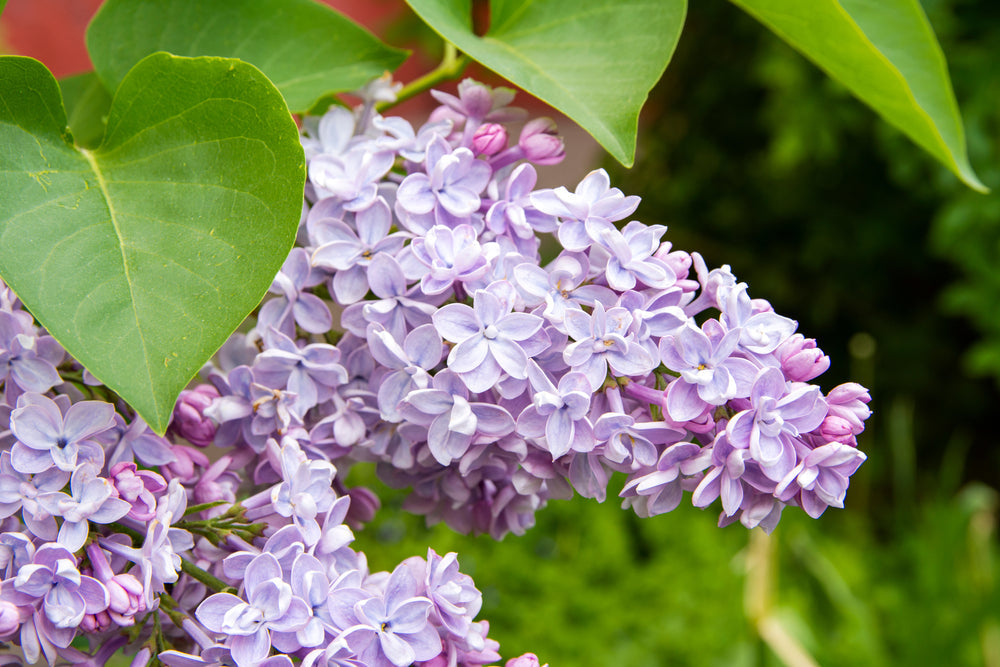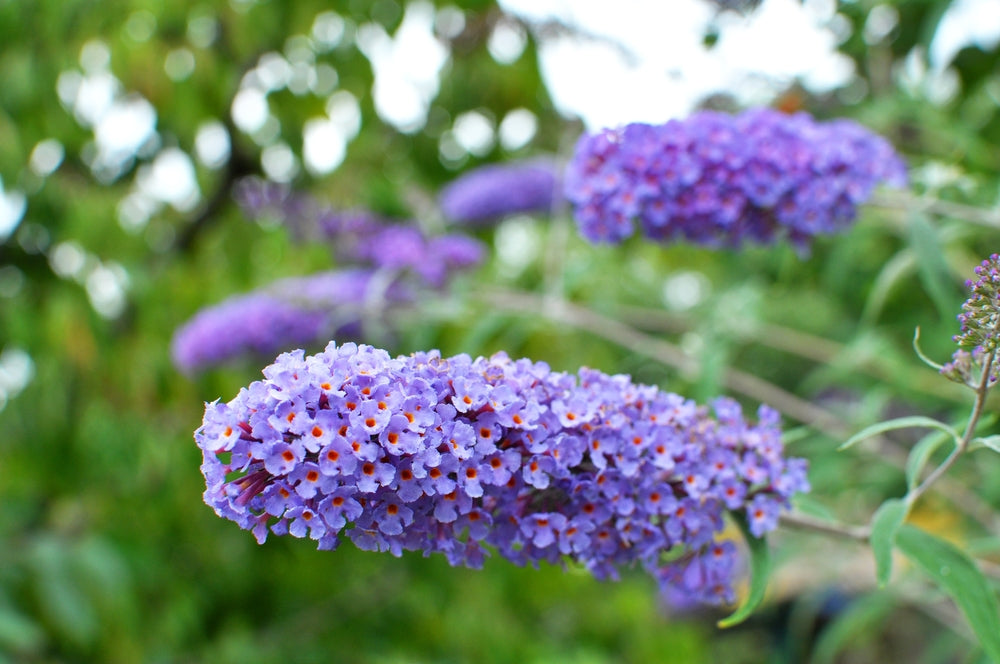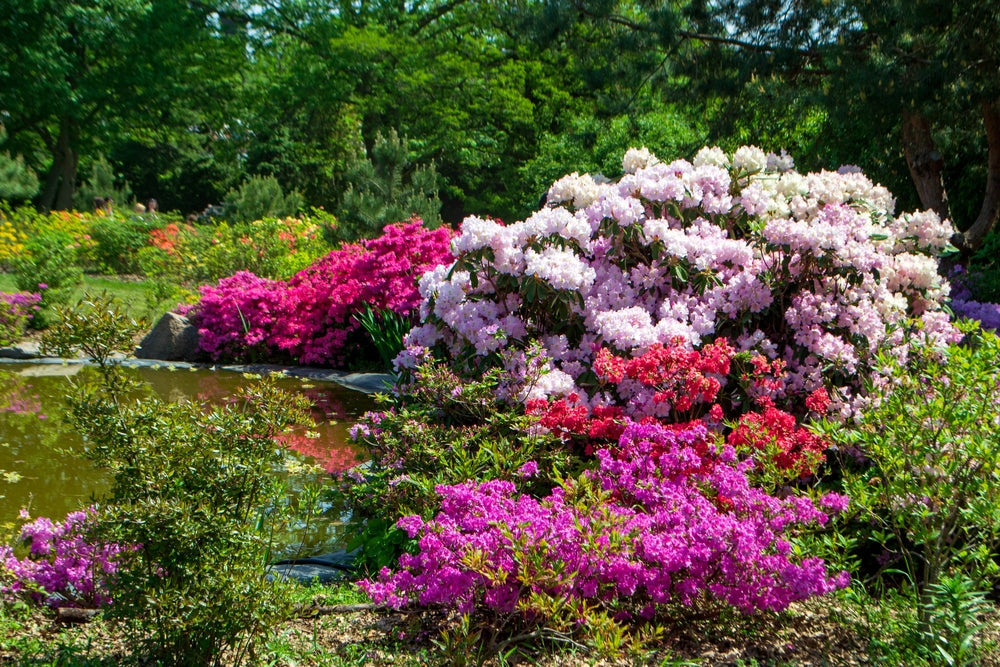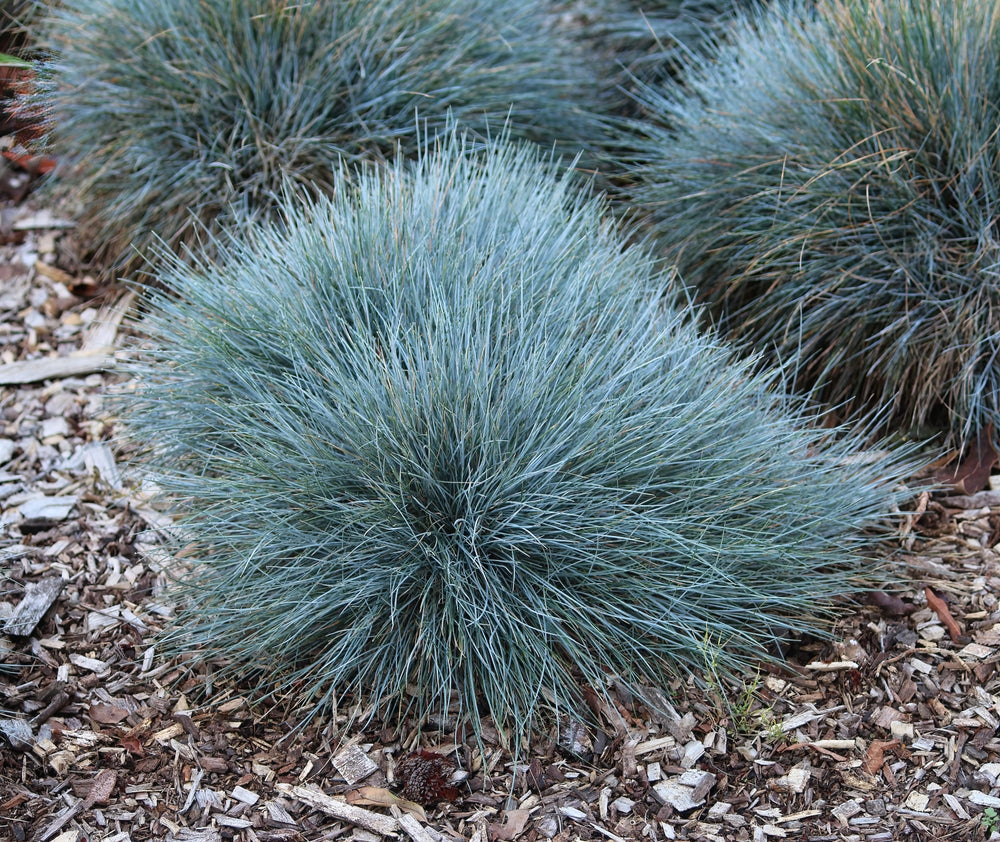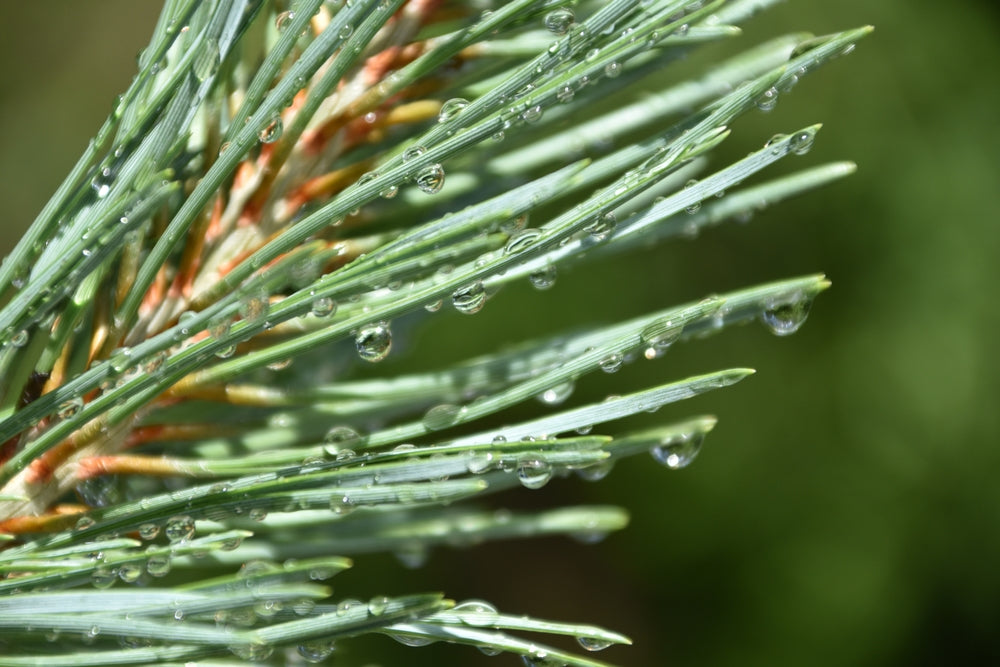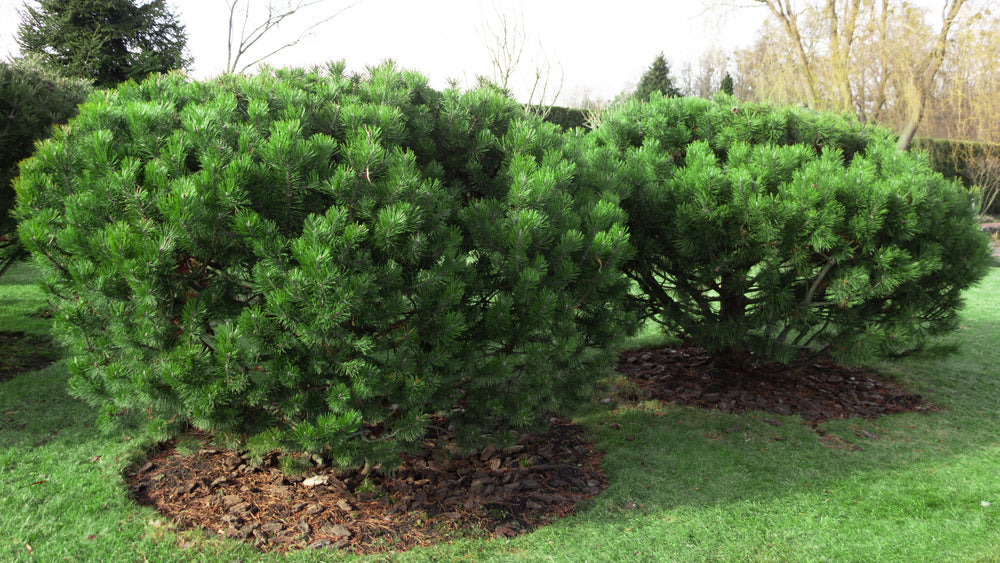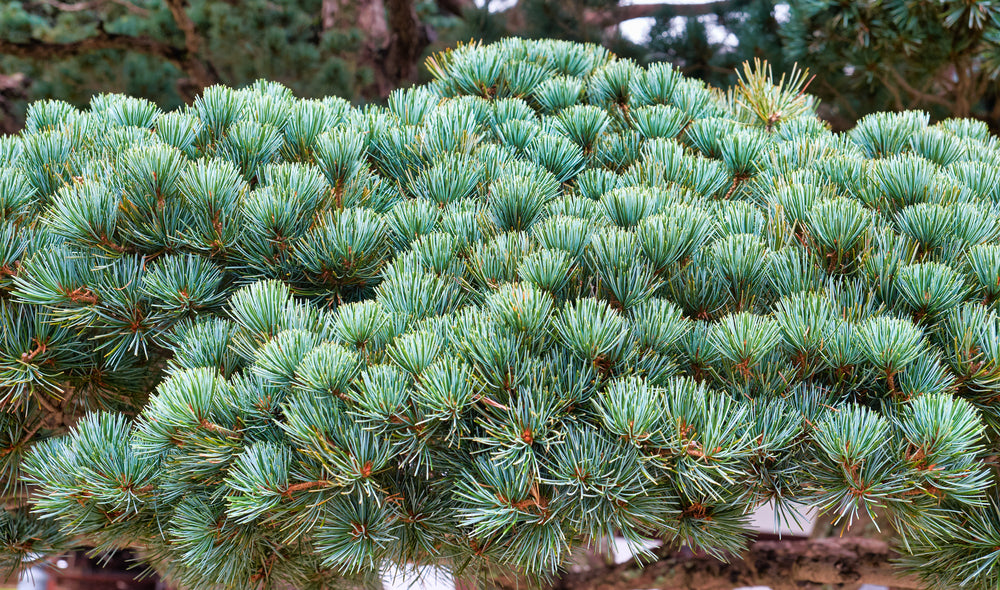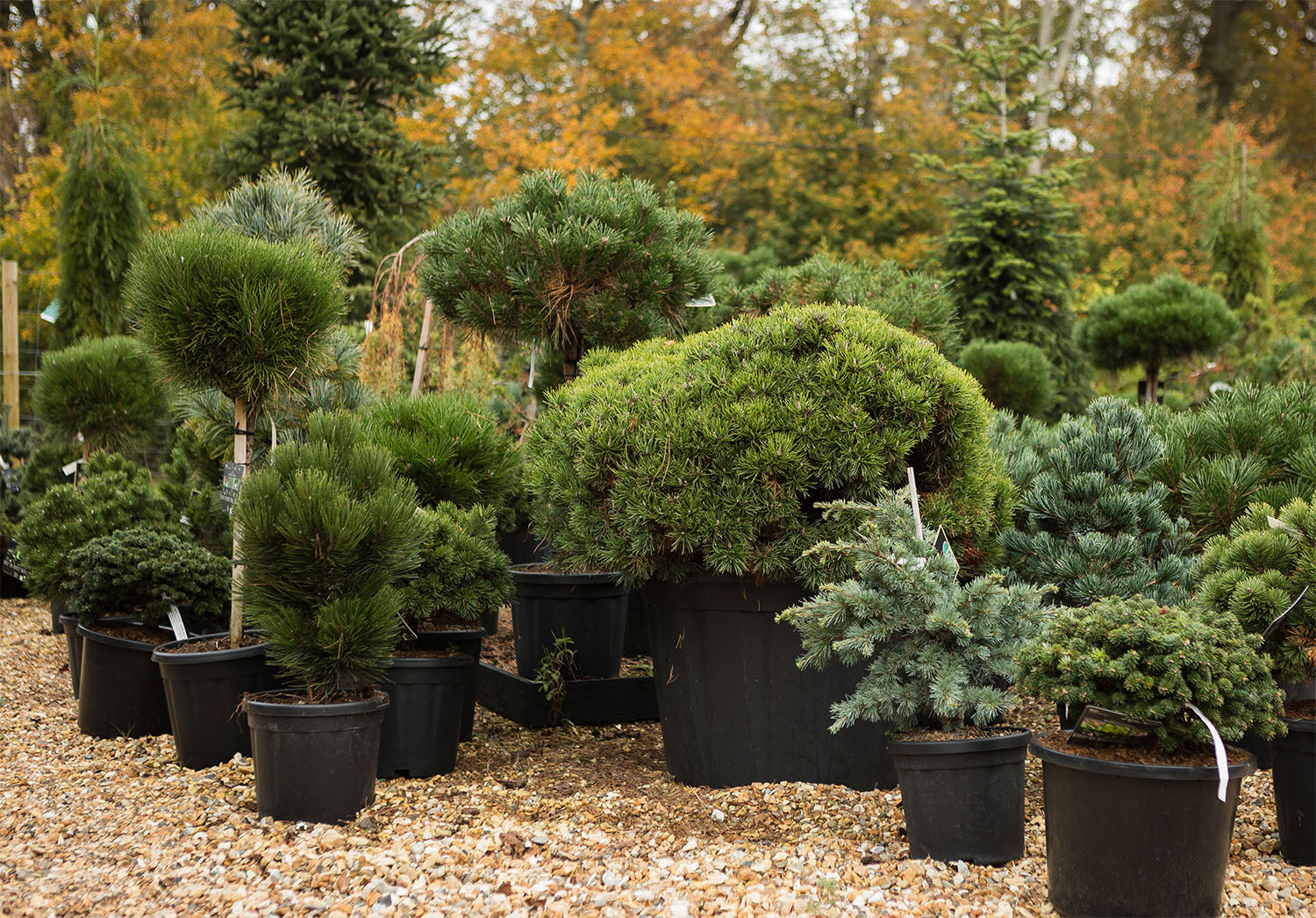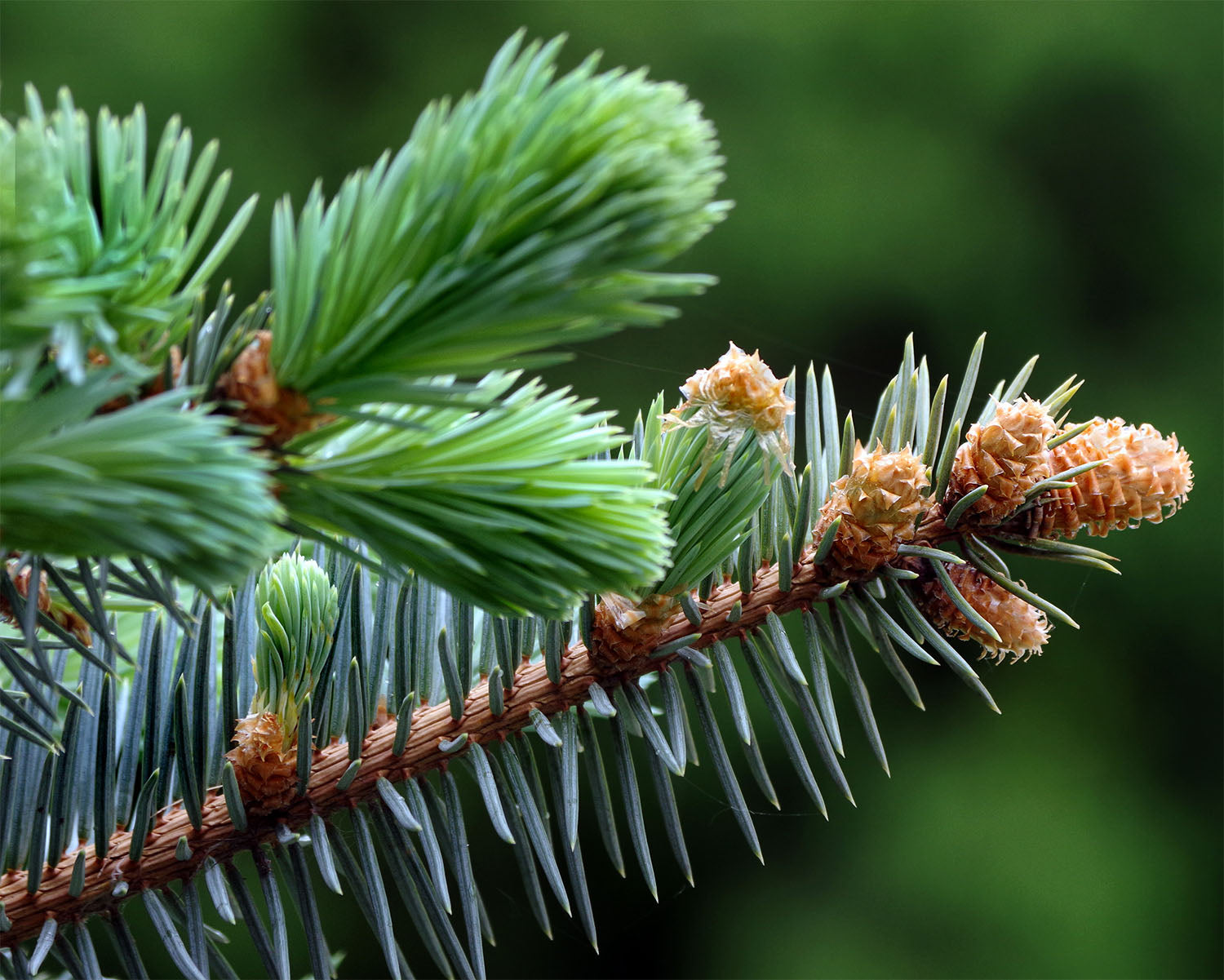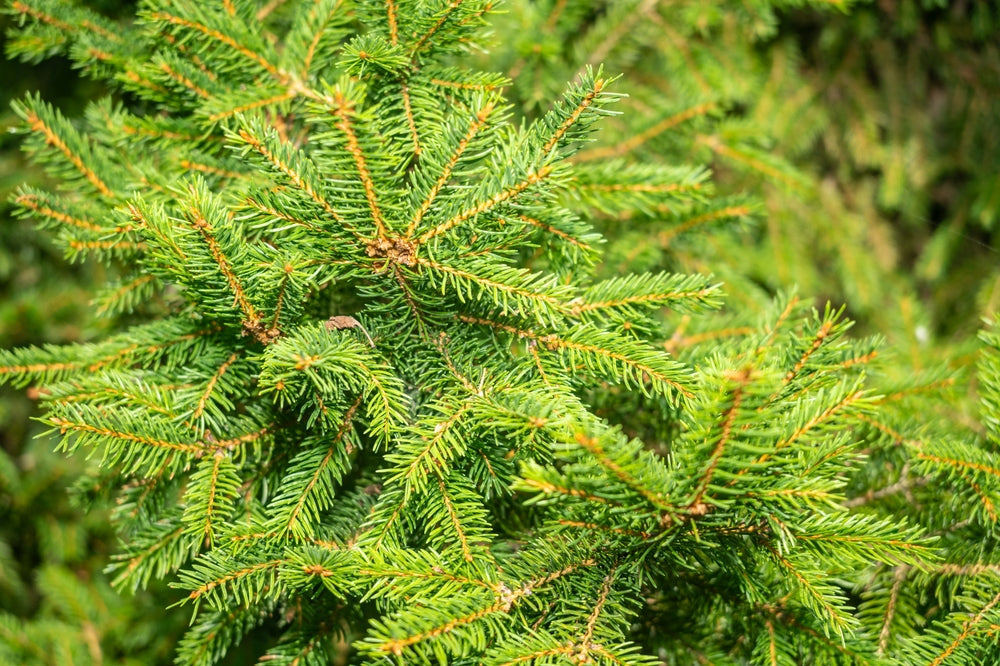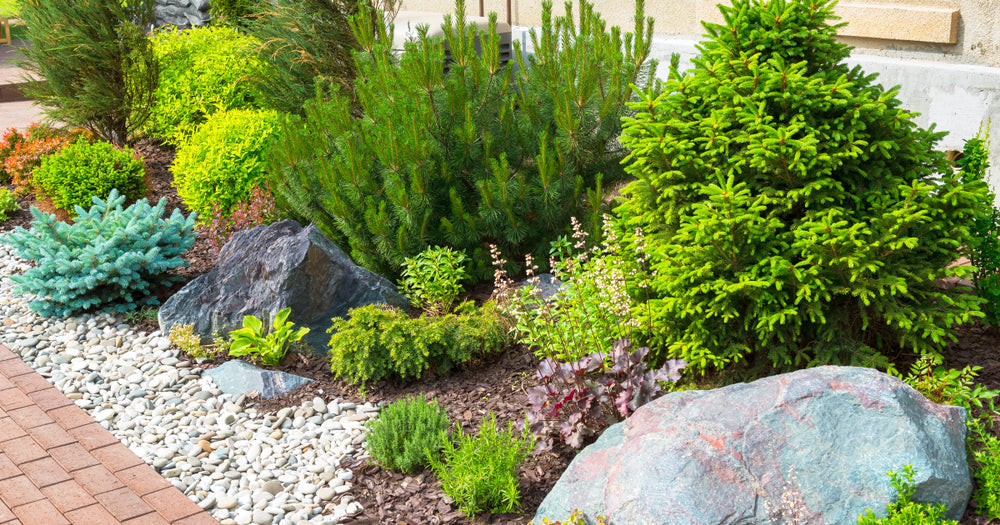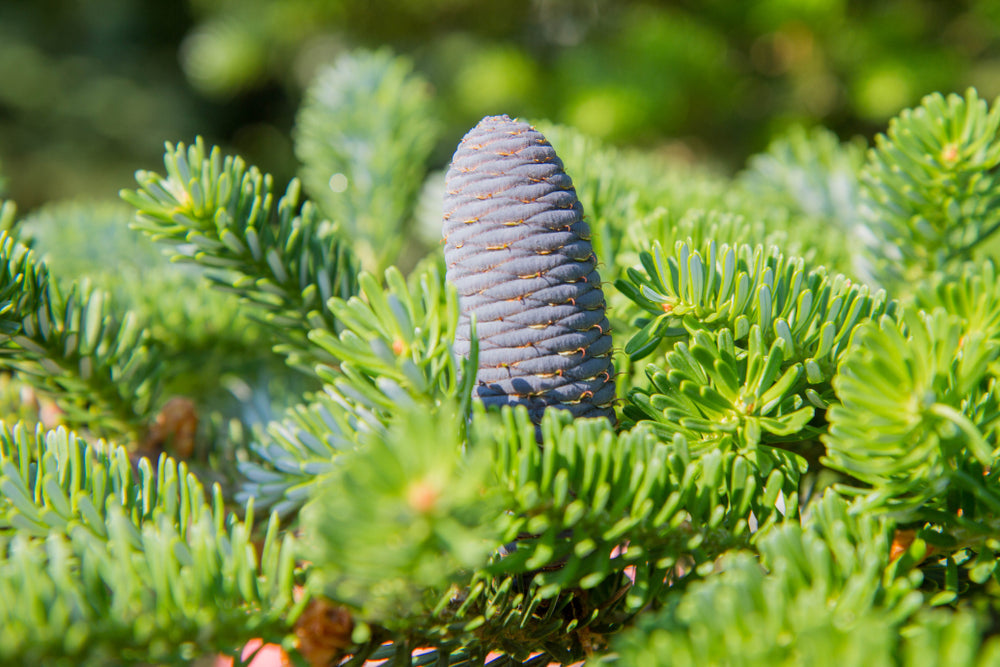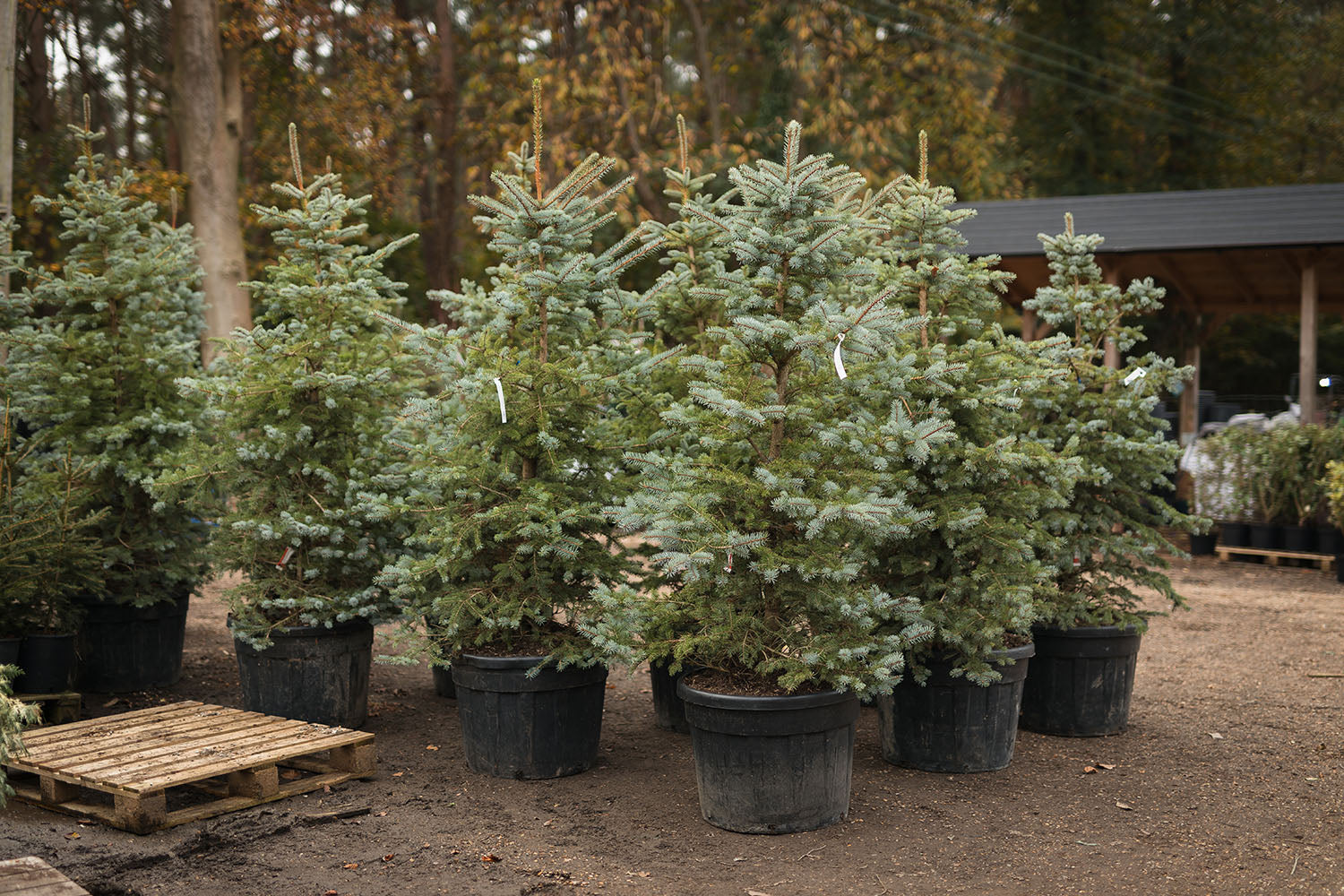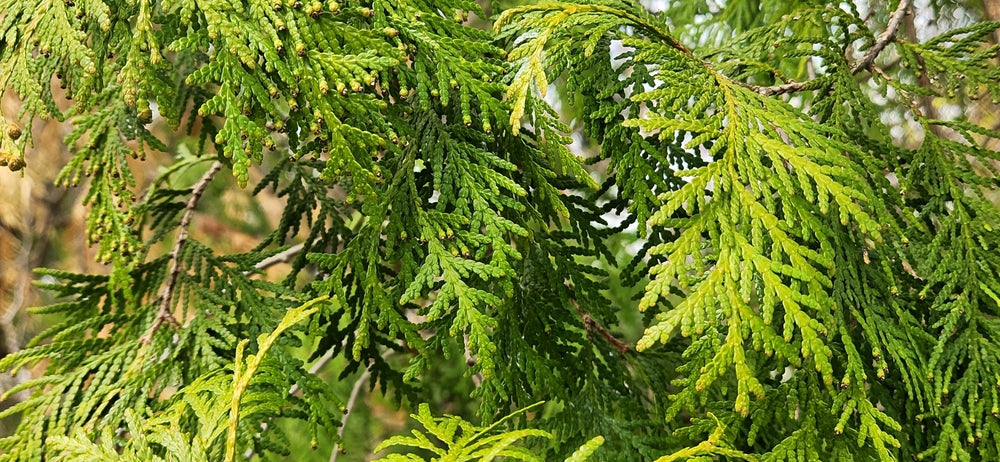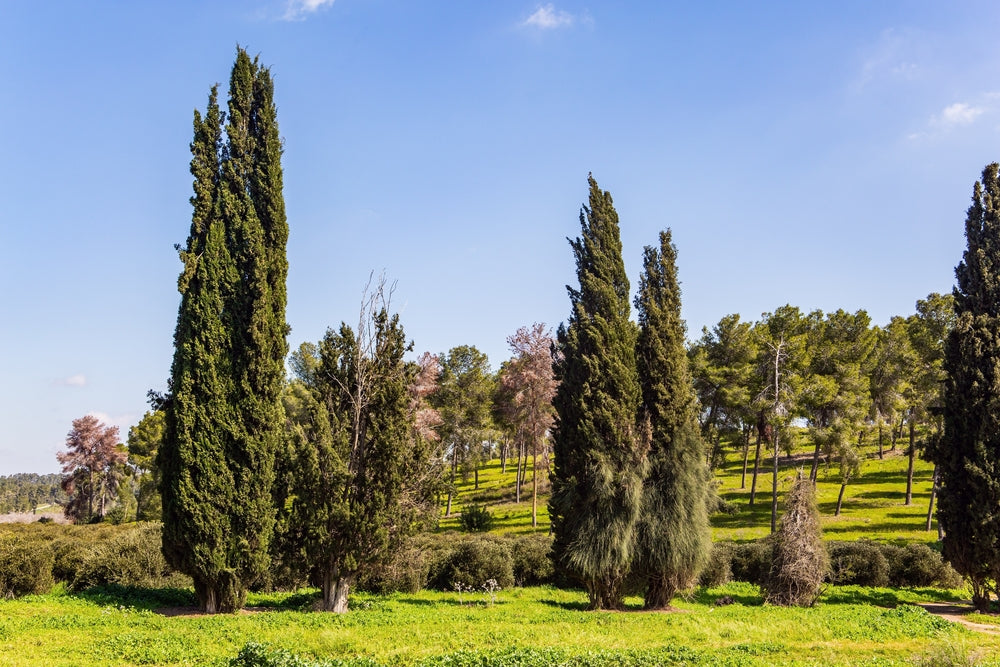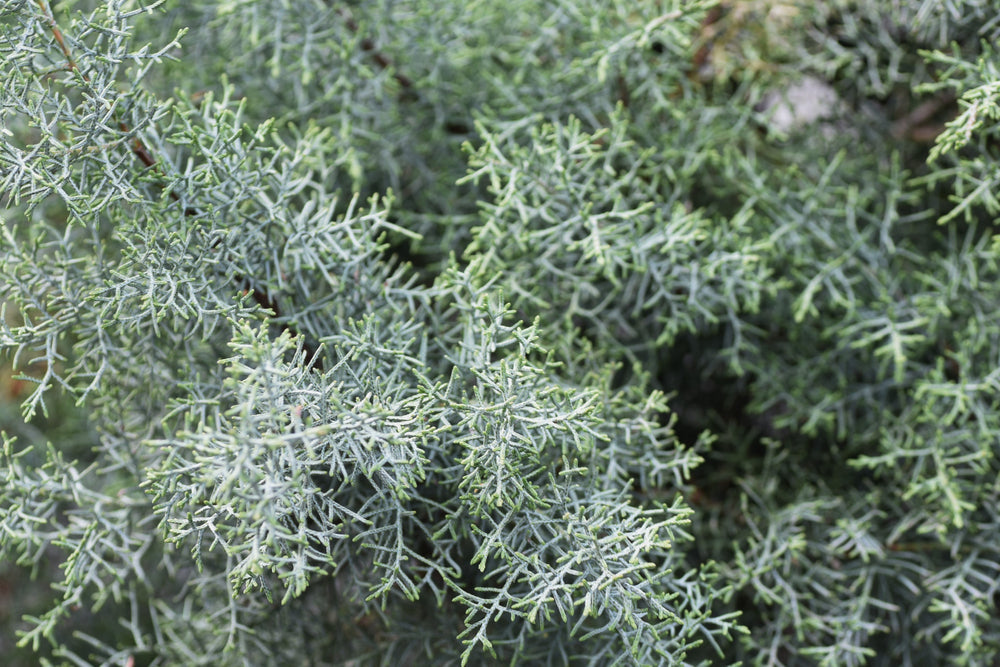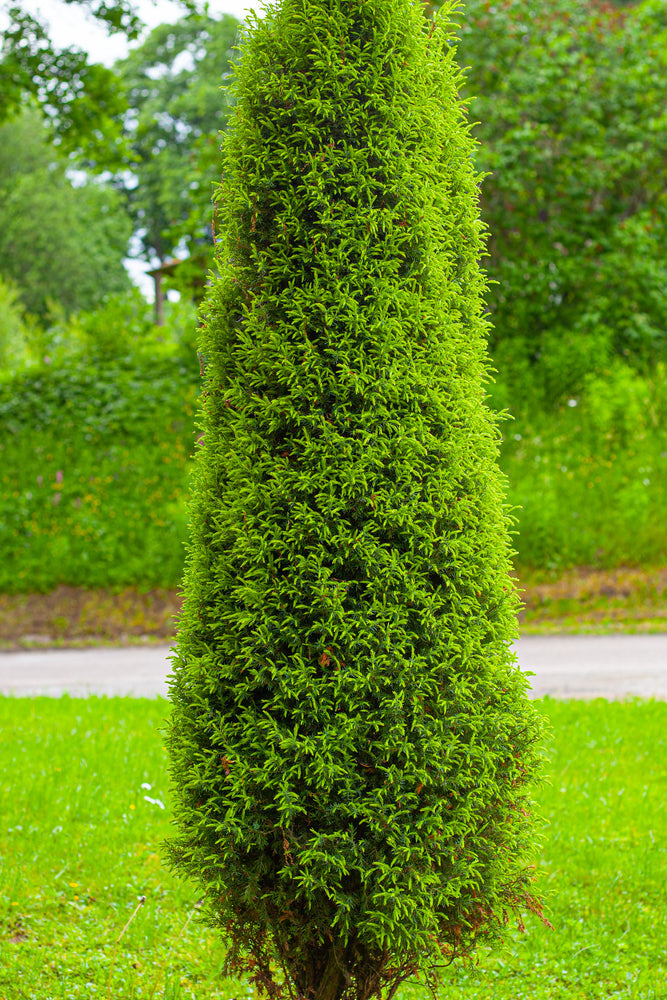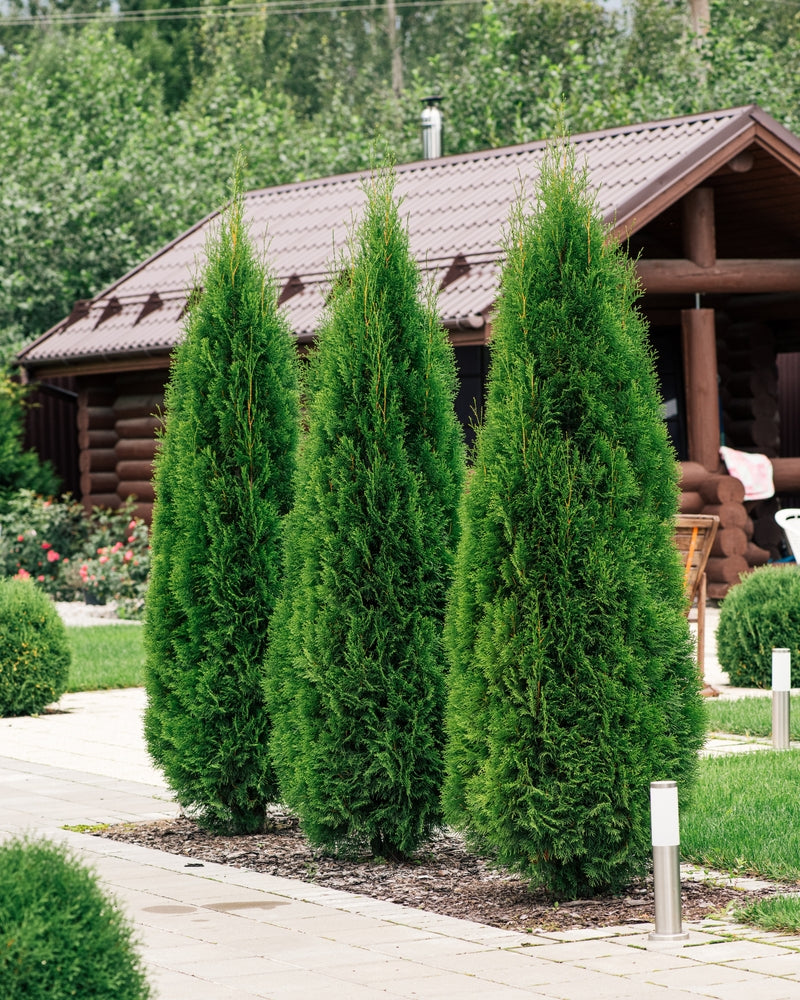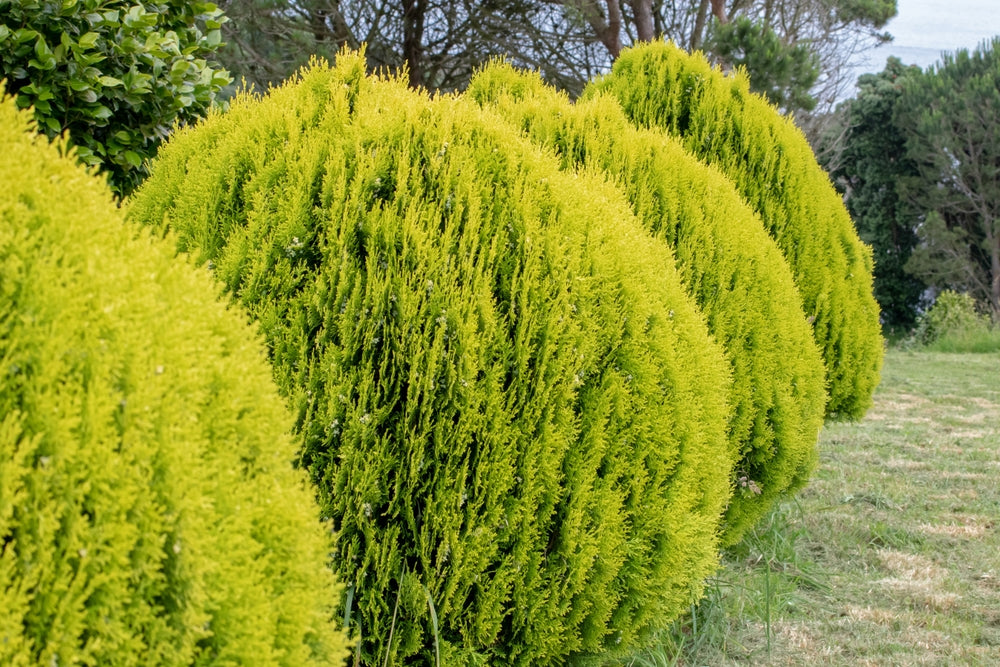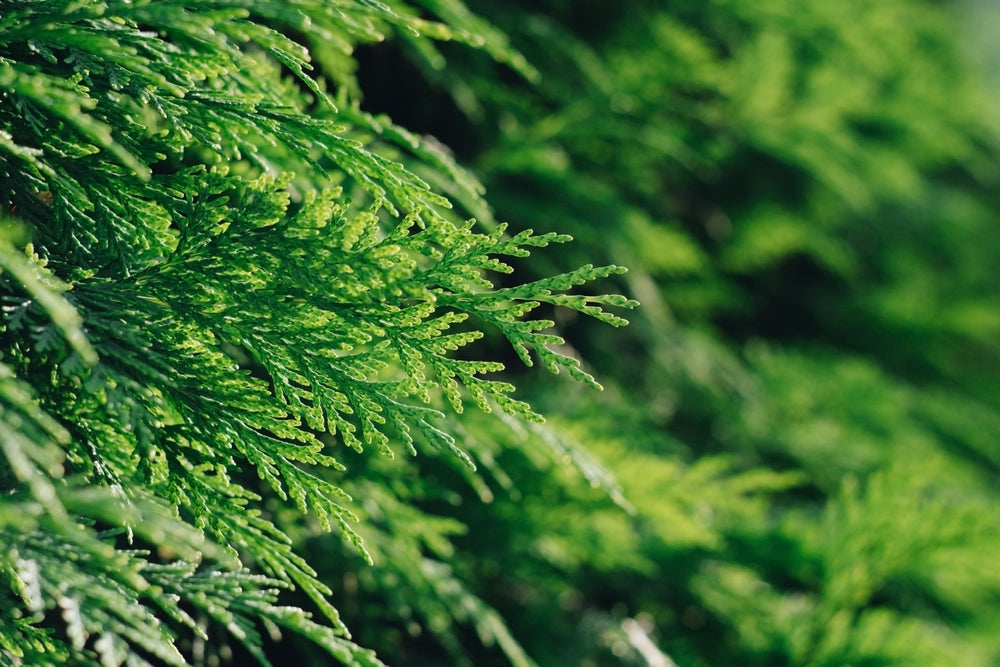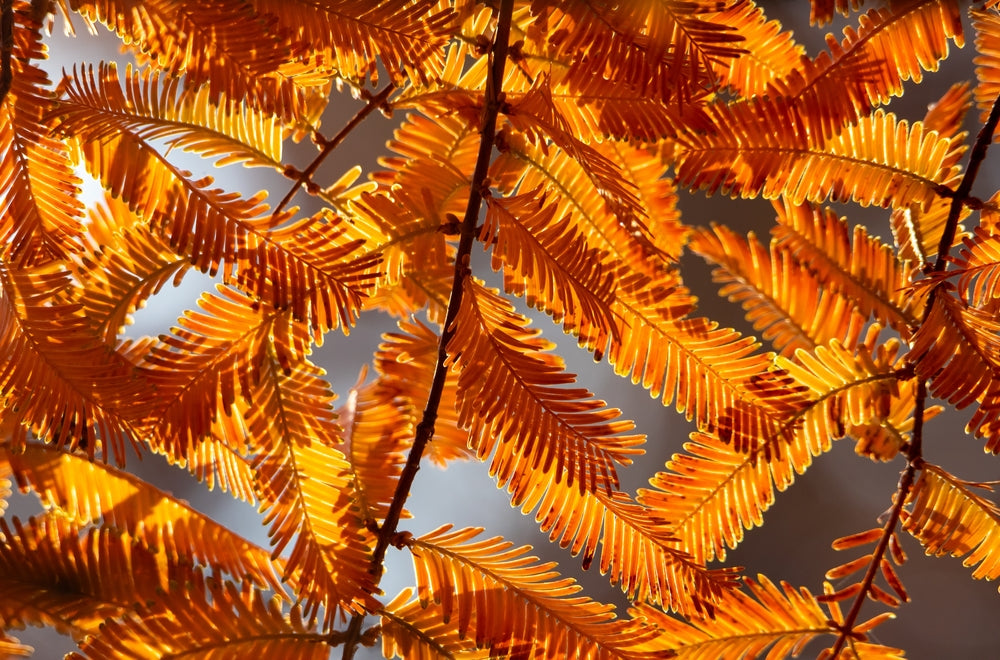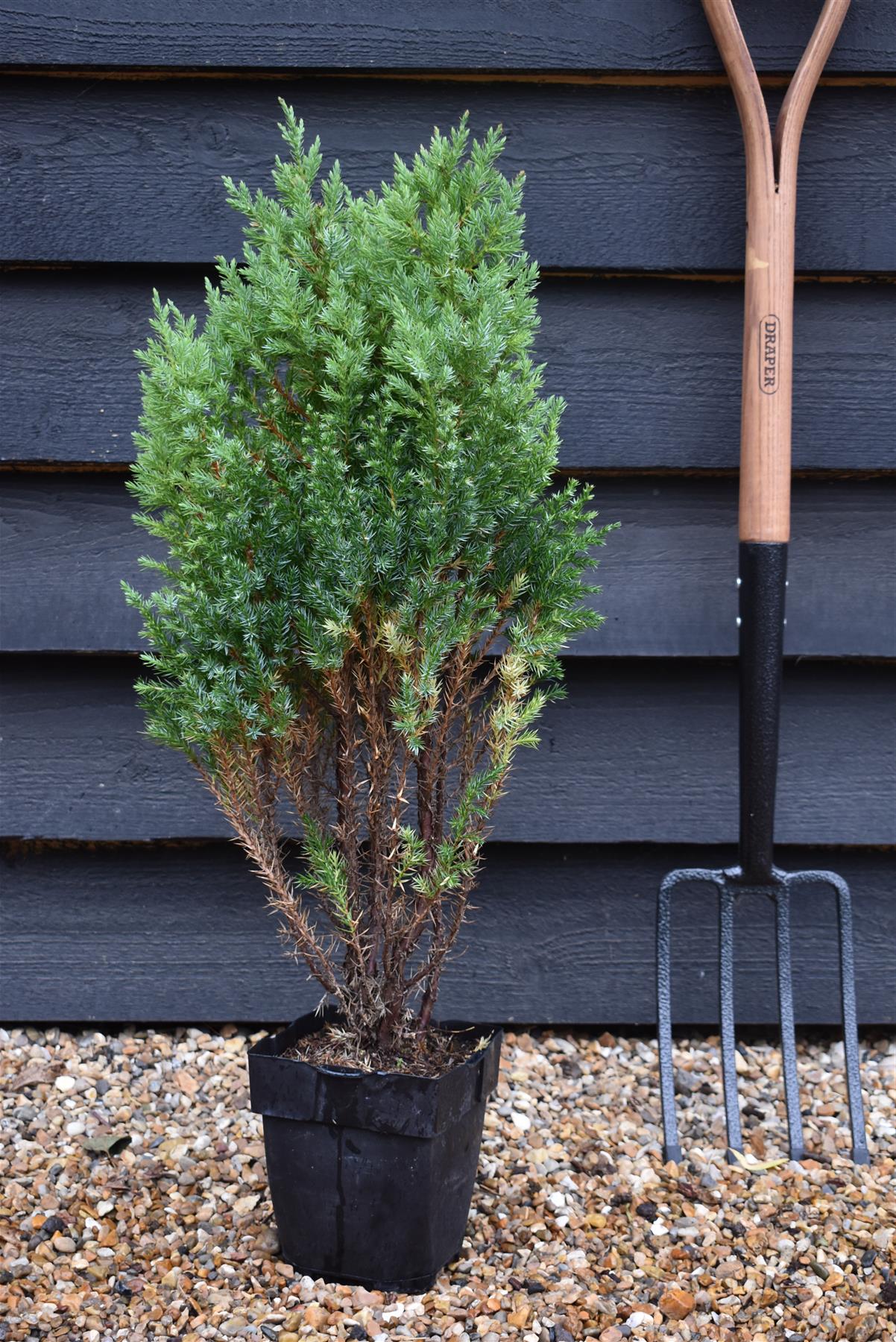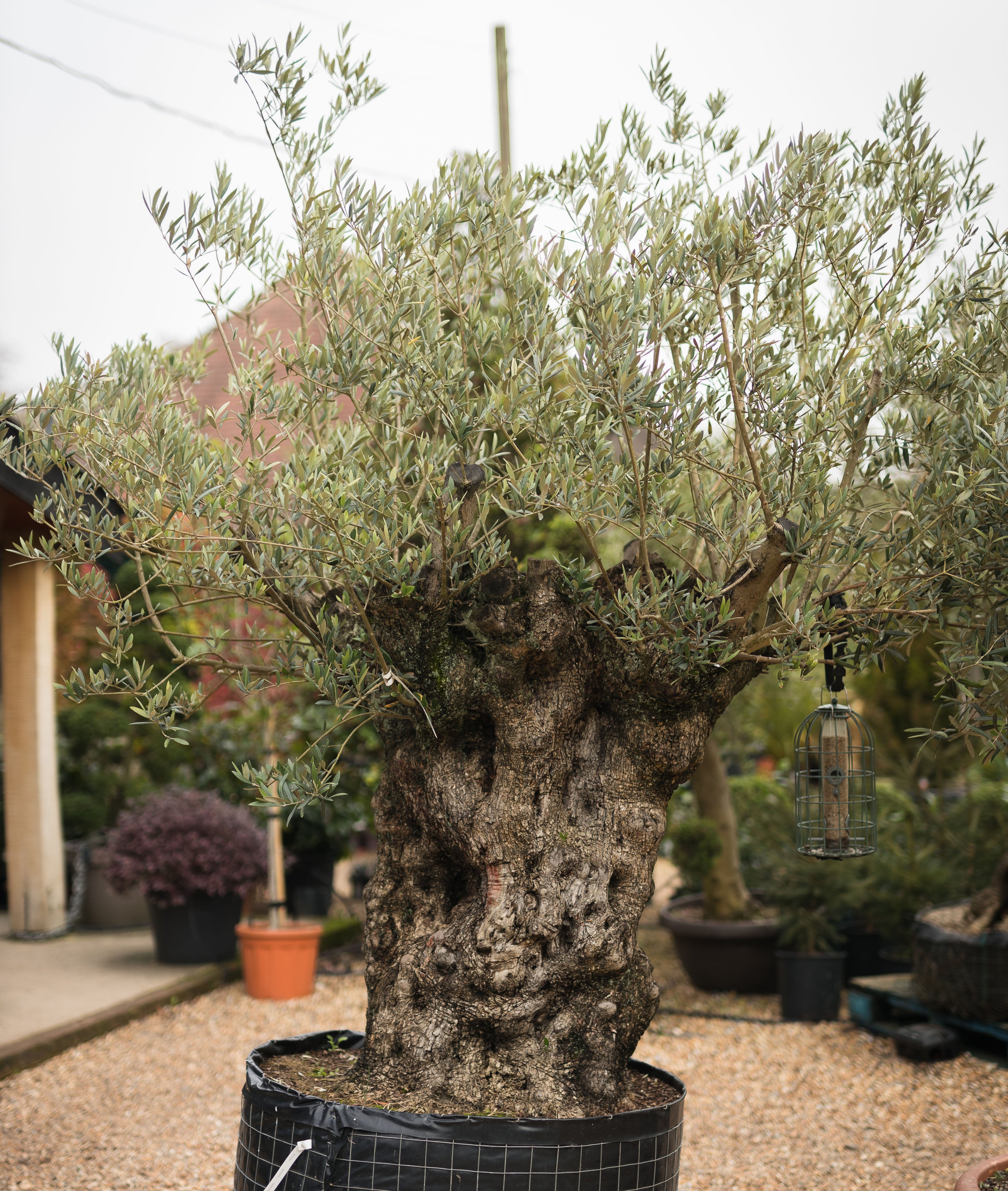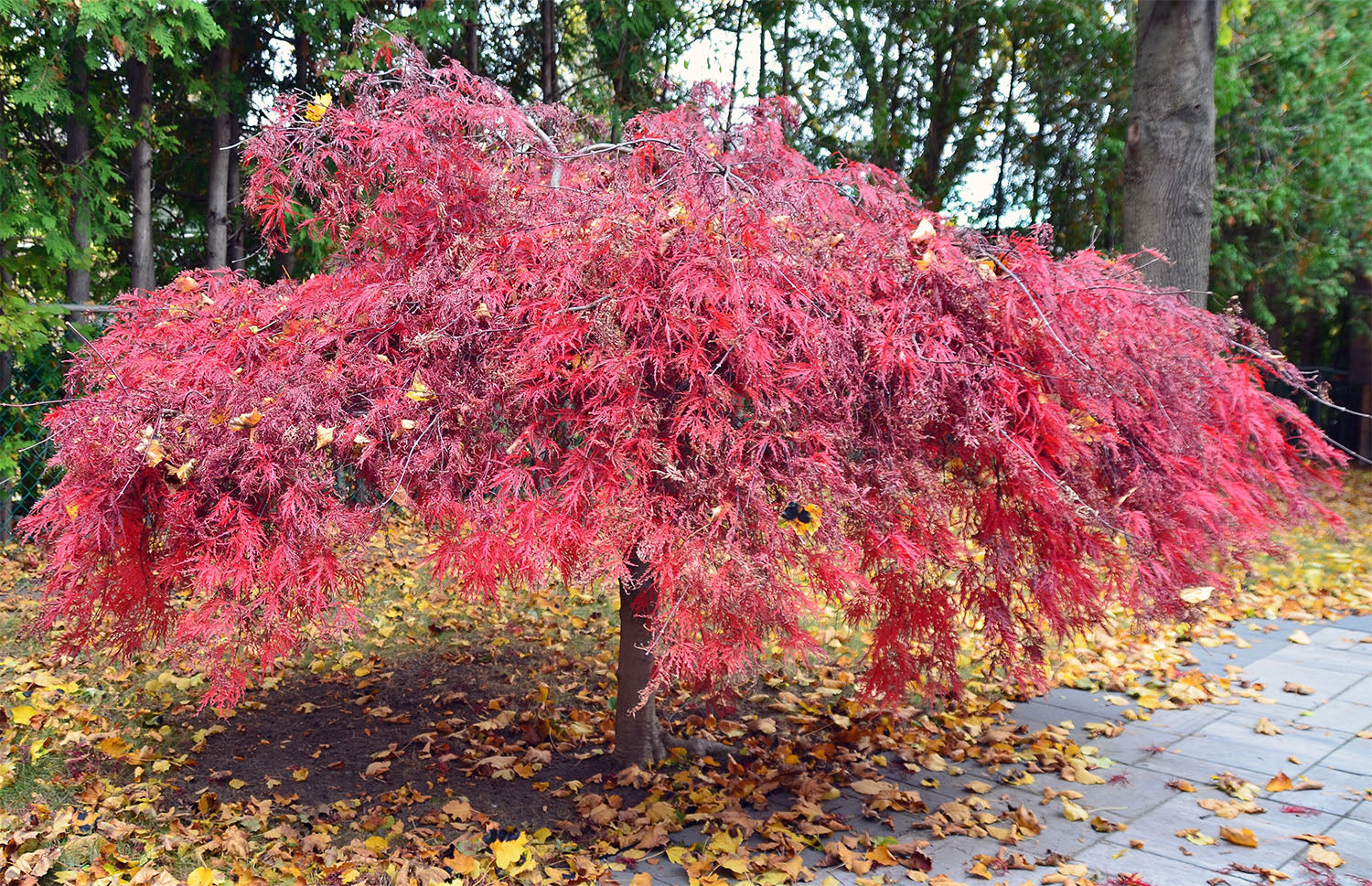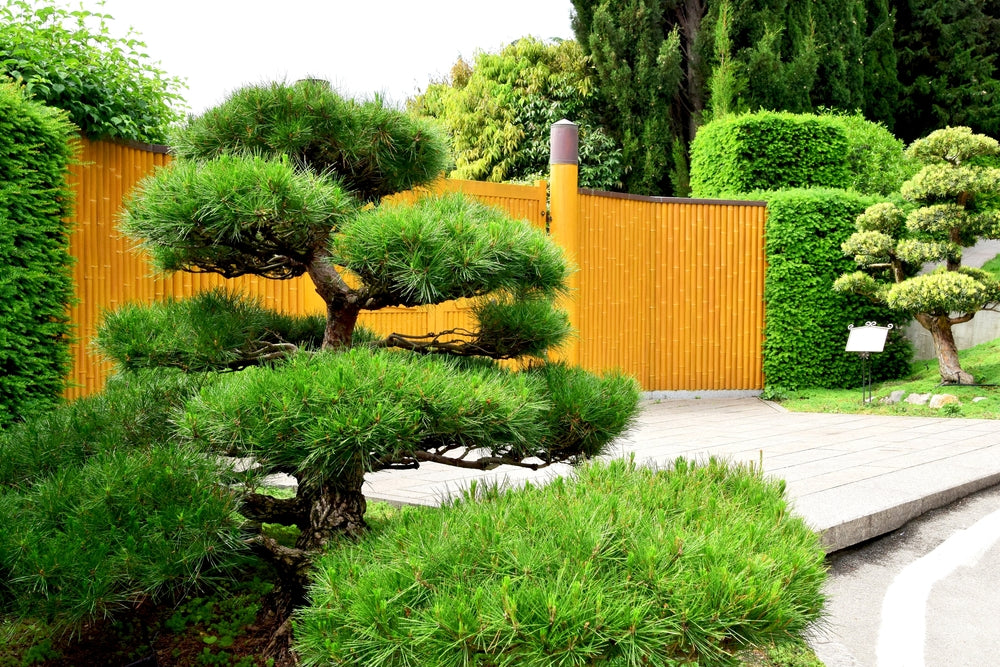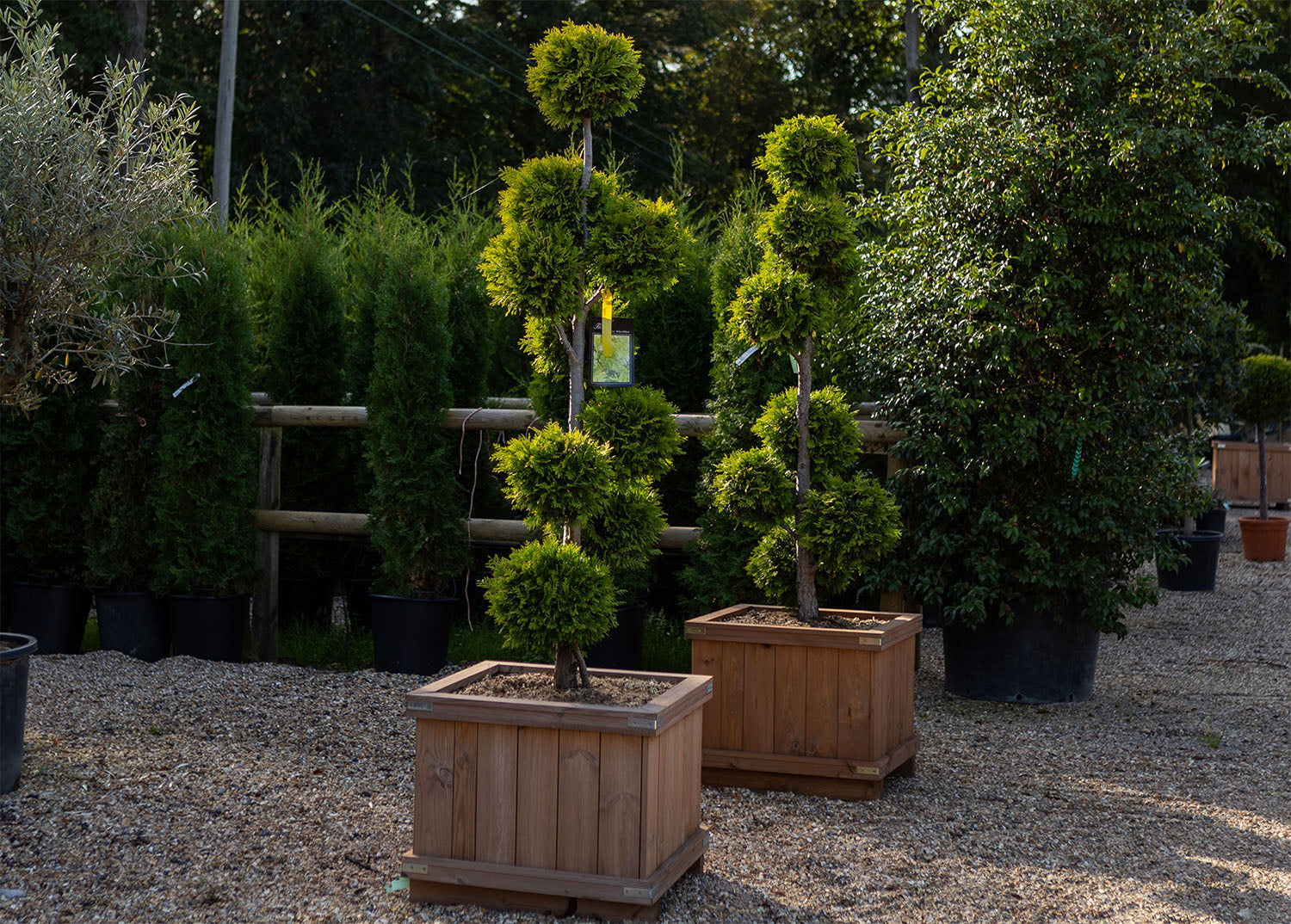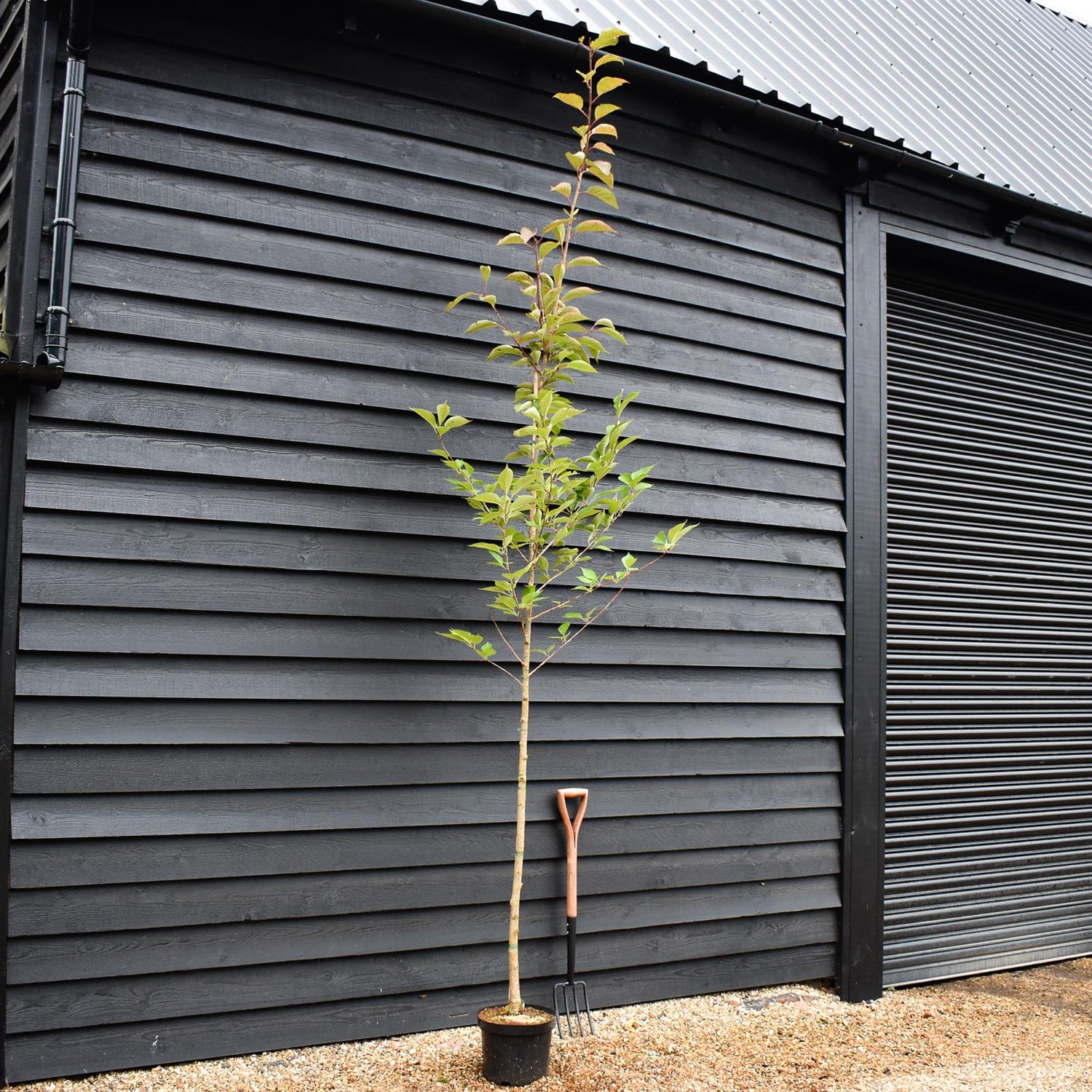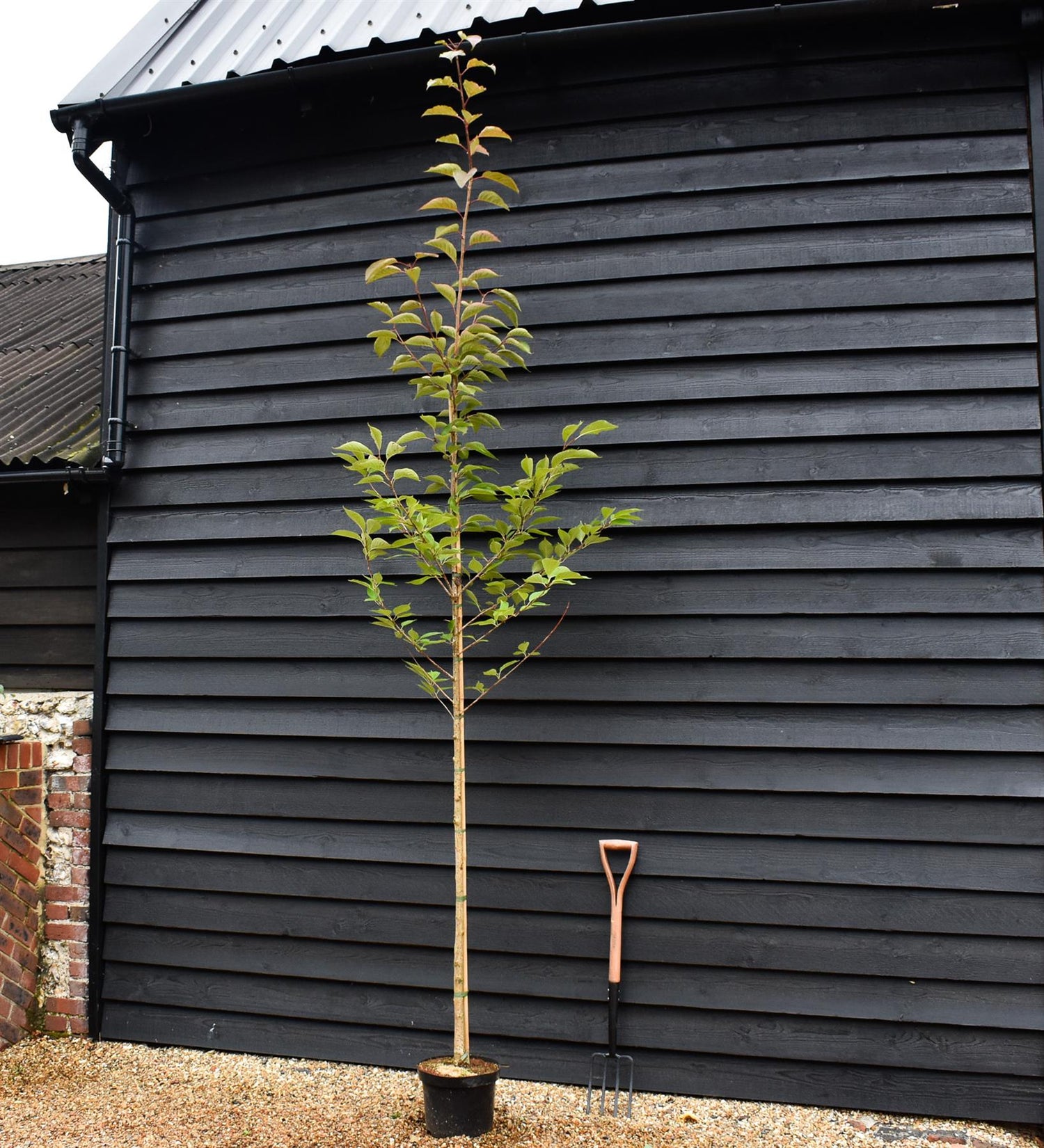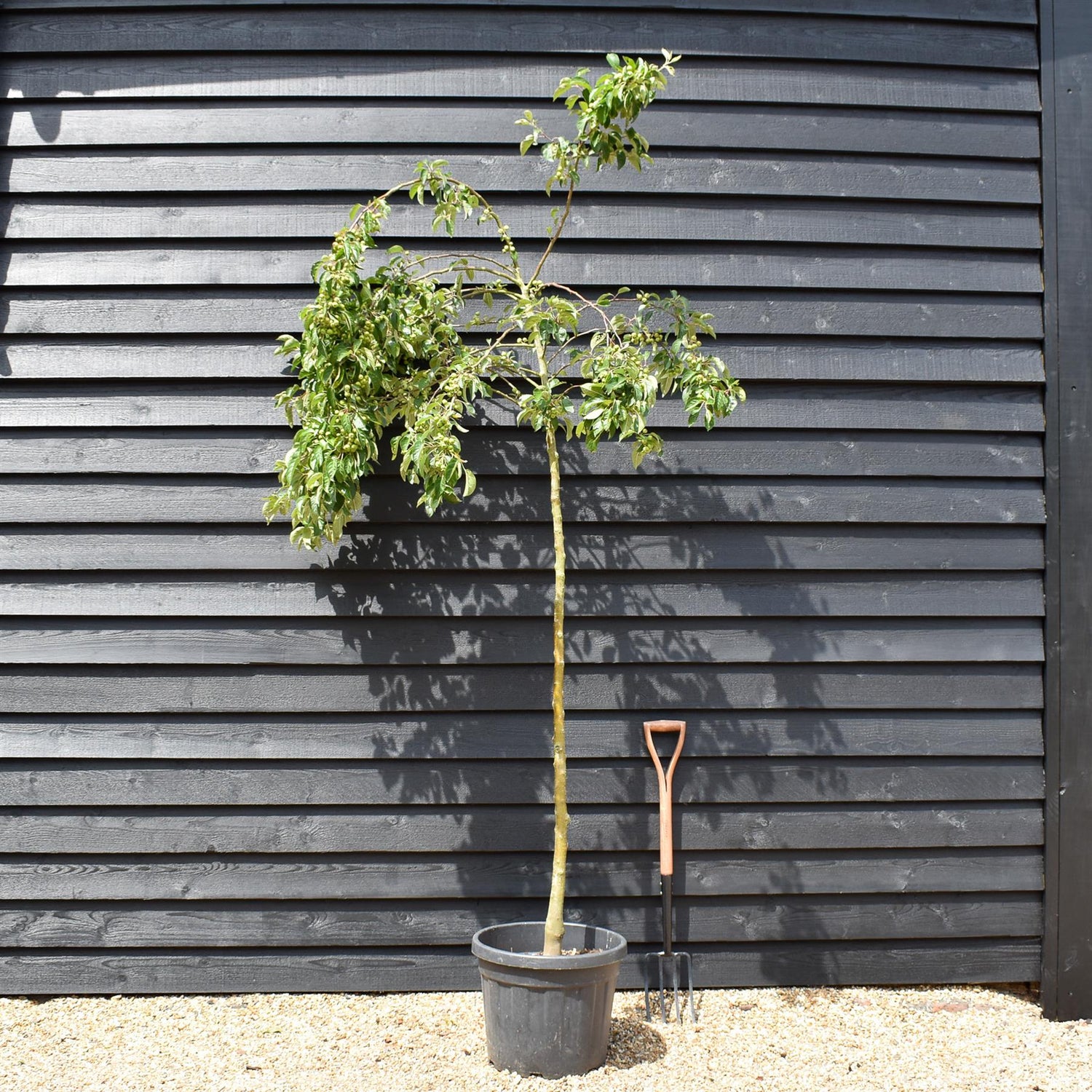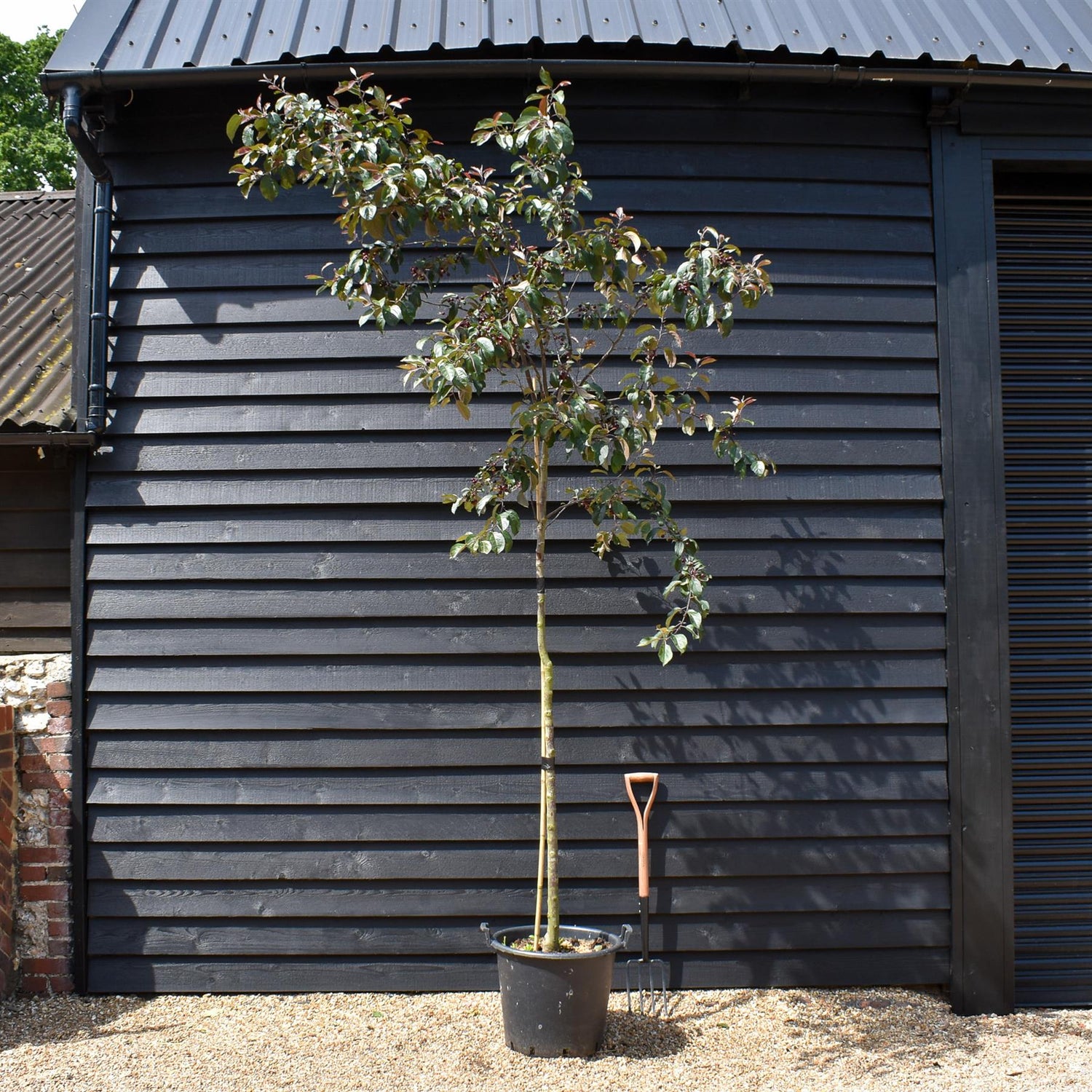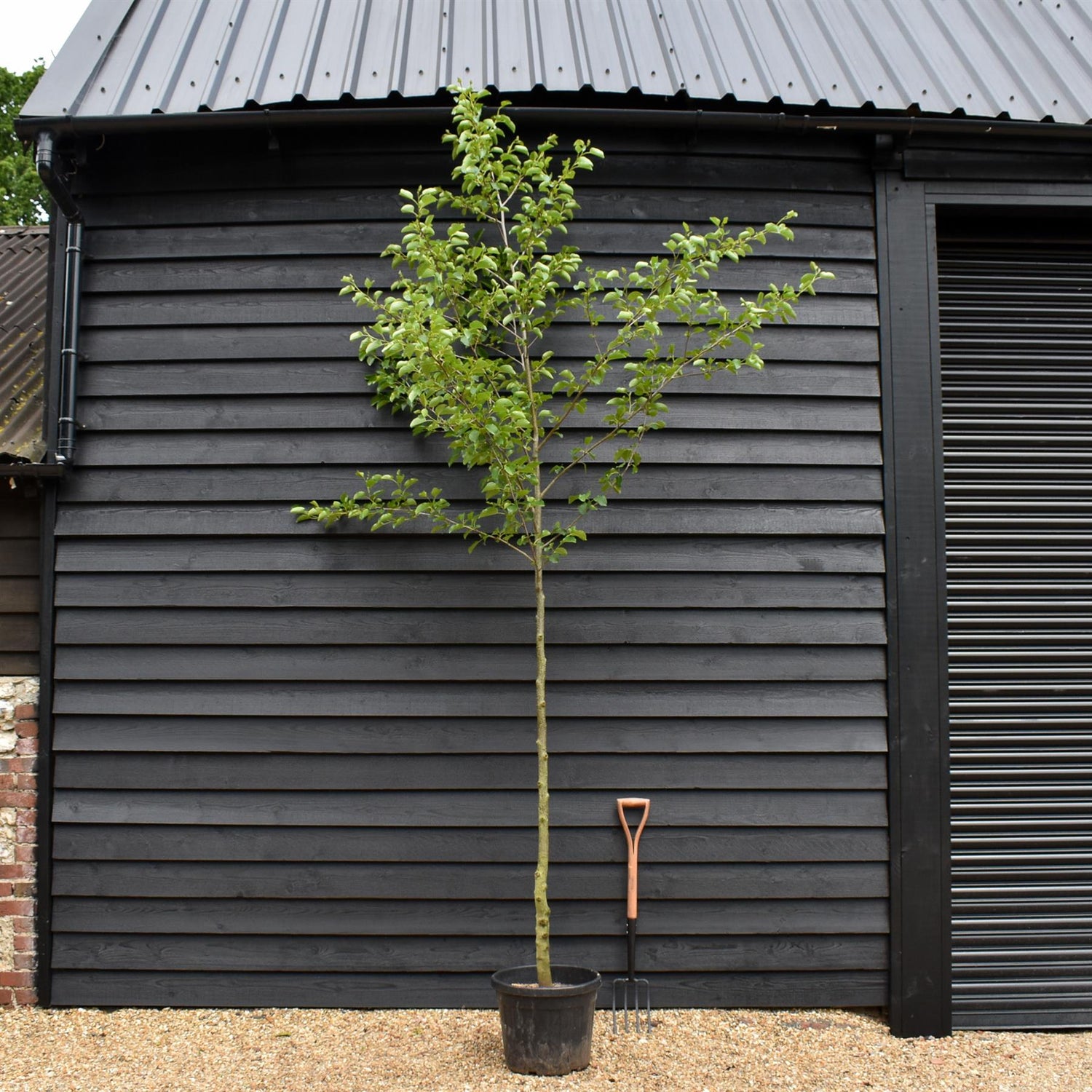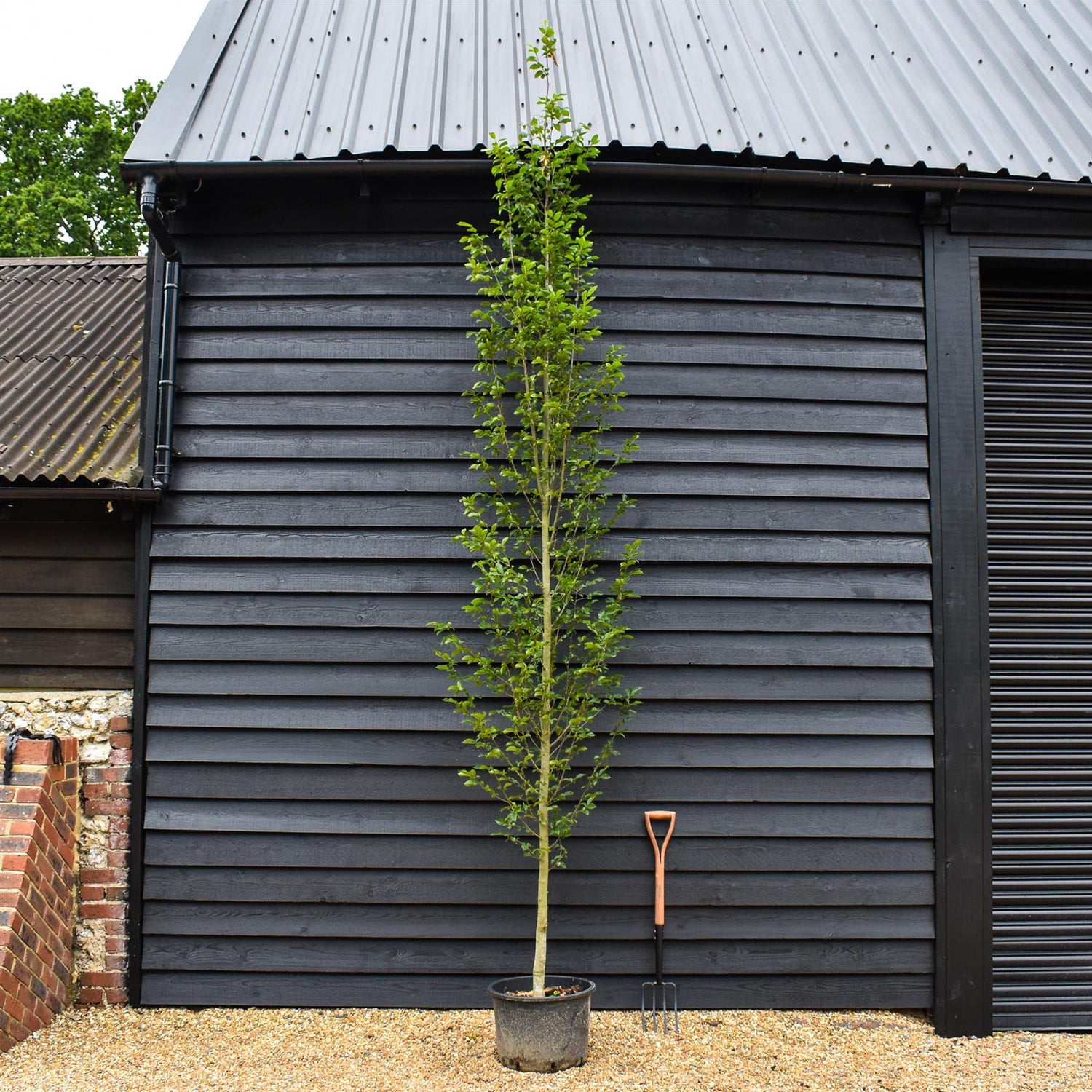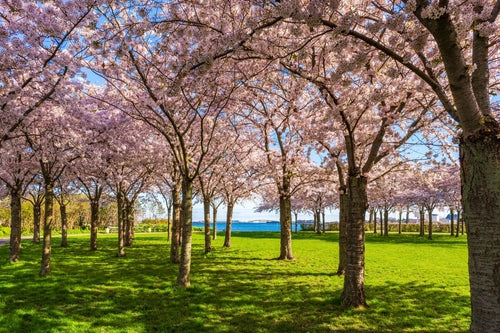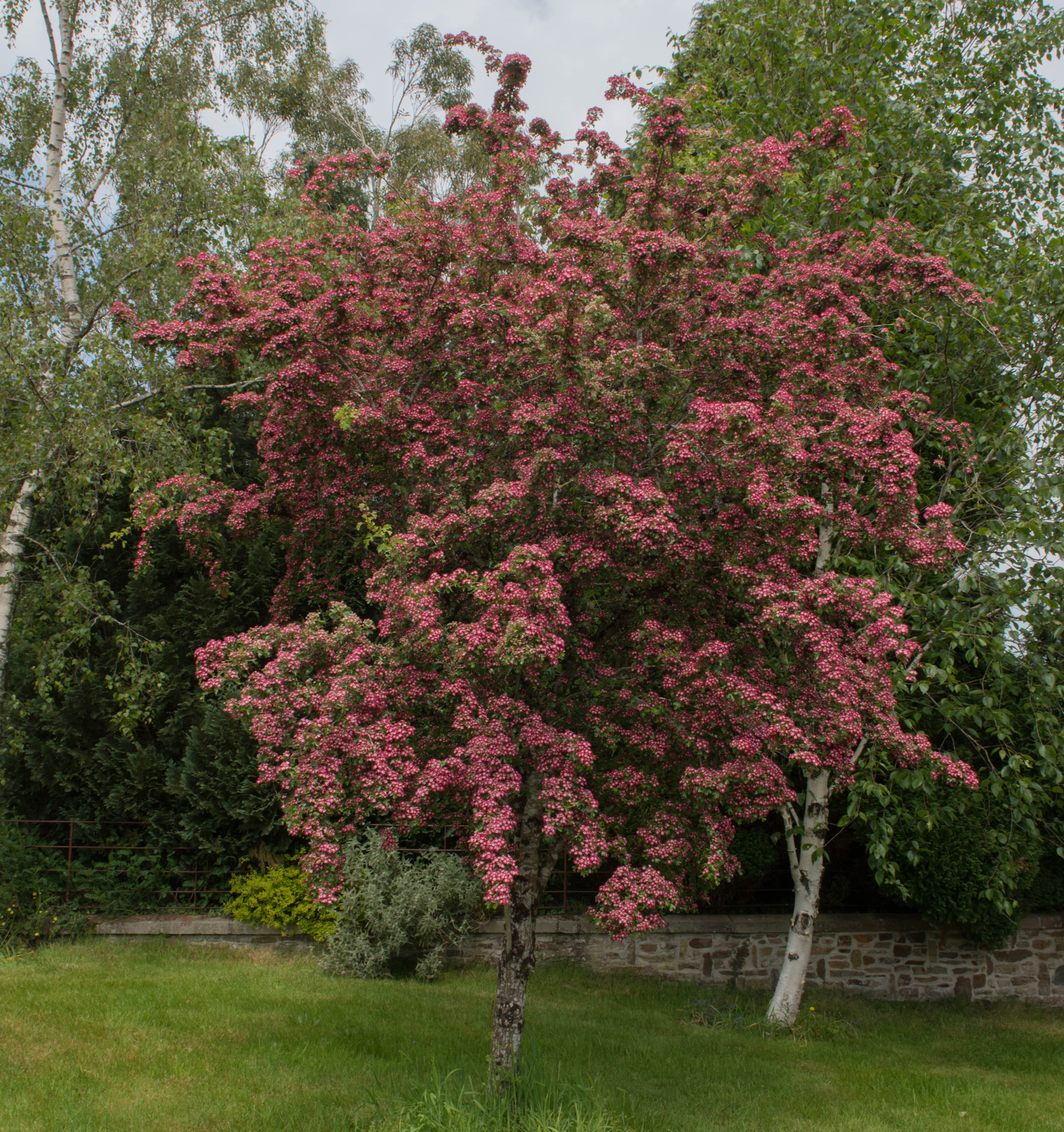230 products
230 products
Sort by:

Fagus Sylvatica | Fagus sylvatica - Girth 8-10cm - Height 250-280cm - 45lt
£380.00
Unit price perFagus Sylvatica | Fagus sylvatica - Girth 8-10cm - Height 250-280cm - 45lt
£380.00
Unit price perFagus sylvatica is a beautiful, large, law-branched, deciduous tree, with pyramidal habit when young and more rounded and spreading crown when mature and thin, smooth, grey bark. Ovate, pale green to dark green leaves turn golden bronze in autumn. Small, inconspicuous, yellowish-green flowers bloom in spring and are followed by edible, triangular beech nuts in autumn. Common Beech grows best in deep, rich, moist, well-drained soils, in full sun or partial shade. It doesn’t tolerate waterlogged soils or heavy clay. Once established, somewhat tolerant to drought. It is generally disease-free and pest-free. Easy to grow, low maintenance plant. It may not grow well in urban areas and doesn’t like to be moved, it is difficult to transplant. Fagus sylvatica is a beautiful, large tree, perfect as a specimen plant or a shade tree for large lawns and parks. It can withstand pruning so it can be used for informal hedges and screens.

Prunus serrulata 'Beni-Yutaka' - Height 370-390cm - Clear Stem 115cm - Girth 8cm - 10lt
£86.00
Unit price perPrunus serrulata 'Beni-Yutaka' - Height 370-390cm - Clear Stem 115cm - Girth 8cm - 10lt
£86.00
Unit price perPrunus serrulata 'Beni-Yutaka' is a highly ornamental Japanese cherry cultivar admired for its striking spring display and graceful form. This deciduous tree develops a broad, spreading crown with elegant, arching branches, creating a soft, rounded silhouette that makes it ideal as a focal point in gardens and landscapes. In mid to late spring, it bursts into a profusion of large, semi-double flowers, a rich rosy-pink in color, which emerge in generous clusters, giving the tree an especially luxuriant and showy appearance. The blossoms often create a breathtaking canopy, attracting pollinators and delighting viewers with their vibrant yet delicate beauty.
The foliage provides additional seasonal interest. When young, the leaves emerge bronze-tinted, gradually maturing to a rich, glossy green throughout summer. As autumn approaches, they transform into glowing shades of orange, gold, and red, extending the tree’s ornamental value well beyond the flowering season. Typically reaching 5–8 meters in height and spread, 'Beni-Yutaka' is well-suited for medium-sized gardens, avenues, or parks. It thrives best in well-drained soil with full sun exposure, embodying elegance and seasonal charm in any landscape setting.
Cut Leaved Black Alder | Alnus Glutinosa Laciniata - Feathered - Height 175-200cm - 10lt
£105.00
Unit price perCut Leaved Black Alder | Alnus Glutinosa Laciniata - Feathered - Height 175-200cm - 10lt
£105.00
Unit price perAlnus glutinosa Laciniata, commonly known as Cut-leaved Alder, is a deciduous tree and a distinct cultivar of the Black Alder. Native to Europe, this ornamental tree is valued for its unique and finely dissected foliage, giving it a delicate and graceful appearance. The deeply lobed, fern-like leaves are dark green, offering a lacy texture that sets it apart from the standard Alnus glutinosa, which typically has more rounded leaves.
Mature trees can reach a height of 12 to 20 metres, with a spread of about 6 to 10 metres, making it a medium-sized tree suitable for gardens, parks, and water-side plantings. The tree has a conical to rounded shape when fully grown, and its branches create an attractive structure, especially in winter when the leaves have fallen.
Like other alders, ‘Laciniata’ is well adapted to wet soils and thrives in damp, poorly drained areas. It is often found near rivers, streams, and wetlands. The tree is also tolerant of urban pollution and can withstand occasional waterlogging, making it a versatile choice for various landscapes.
In spring, ‘Laciniata’ produces small, inconspicuous catkins, which eventually develop into small, woody cones containing seeds. These cones add an extra ornamental feature to the tree, especially in the autumn and winter months.
Alnus glutinosa ‘Laciniata’ is also beneficial to the environment. As a member of the birch family, it has the ability to fix nitrogen in the soil, improving fertility and promoting biodiversity. This makes it an excellent choice for ecological restoration projects.
Overall, Alnus glutinosa ‘Laciniata’ is an elegant and functional tree that brings beauty, wildlife support, and environmental benefits to the landscapes where it is planted.
Cherry Kanzan | Prunus serrulata 'Kanzan' - Bottom graft - Low Bush - Height 100-120cm - 20lt
£98.00
Unit price perCherry Kanzan | Prunus serrulata 'Kanzan' - Bottom graft - Low Bush - Height 100-120cm - 20lt
£98.00
Unit price perJapanese Crab Apple Tree | Malus Floribunda - Height 250-300cm - Girth 6-8cm - 45lt
£155.00
Unit price perJapanese Crab Apple Tree | Malus Floribunda - Height 250-300cm - Girth 6-8cm - 45lt
£155.00
Unit price perCotoneaster x watereri - Clear Stem - Height 200-220cm - 20lt
£92.00
Unit price perCotoneaster x watereri - Clear Stem - Height 200-220cm - 20lt
£92.00
Unit price perCotoneaster x watereri, often referred to as Waterer's Cotoneaster, is a popular and versatile shrub that has become a cherished addition to many gardens and landscapes in the United Kingdom. This deciduous hybrid shrub is renowned for its attractive appearance, hardiness, and adaptability.
One of the standout features of Cotoneaster x watereri is its elegant form and foliage. It typically grows to a height of 2 to 3 meters, forming a dense and arching habit. The leaves are small, oval-shaped, and glossy green, providing a lush backdrop to its other ornamental features.
One of the most captivating aspects of this shrub is its profusion of flowers and berries. In late spring and early summer, Cotoneaster x watereri bursts into a display of delicate white or pale pink blossoms. These small, star-shaped flowers attract pollinators such as bees and butterflies, contributing to local biodiversity.
As summer progresses into autumn, the shrub transitions into another phase of beauty. It produces an abundance of small, round, and brightly colored berries, typically red or orange. These berries not only add visual interest but also serve as a valuable food source for birds during the colder months, enhancing its ecological significance.
Cotoneaster x watereri is known for its adaptability to various growing conditions. It thrives in well-drained soil and can tolerate both full sun and partial shade, making it a versatile choice for different garden settings. It is also remarkably hardy and resistant to many common pests and diseases, reducing the need for intensive maintenance.
Maintenance for this shrub is generally straightforward. Pruning can be done to shape the plant or remove dead or diseased branches, but it is often not required. Regular watering during dry spells, especially during its establishment phase, helps ensure its healthy growth.
In conclusion, Cotoneaster x watereri, or Waterer's Cotoneaster, is a cherished shrub in the UK that offers year-round appeal. Its graceful form, glossy foliage, profuse blossoms, and colourful berries make it a versatile and visually pleasing addition to gardens and landscapes. Whether used as a specimen plant, a hedge, or ground cover, this adaptable shrub adds beauty and ecological value to outdoor spaces in the United Kingdom.
Flowering Cherry | Prunus Shirotae - Height 220-250cm - Girth 10-14cm - 35lt
£155.00
Unit price perFlowering Cherry | Prunus Shirotae - Height 220-250cm - Girth 10-14cm - 35lt
£155.00
Unit price perJapanese Flowering Cherry | Prunus serrulata 'Ukon' - Height 200-220cm - Girth 6-8cm - 45lt
£155.00
Unit price perJapanese Flowering Cherry | Prunus serrulata 'Ukon' - Height 200-220cm - Girth 6-8cm - 45lt
£155.00
Unit price perPrunus ukon, commonly known as Ukon cherry or Japanese flowering cherry, is a captivating ornamental tree renowned for its stunning springtime blossoms. Belonging to the Rosaceae family, this deciduous tree originates from Japan and is prized for its aesthetic appeal in gardens, parks, and landscapes worldwide.
The Ukon cherry typically reaches heights of 15 to 25 feet and spreads about 15 to 20 feet wide at maturity, forming a graceful, rounded canopy. Its bark is smooth and dark brown, providing an elegant contrast to the vibrant blooms it bears. The foliage consists of serrated, elliptical leaves that emerge bronze-red in spring, gradually maturing to glossy green in summer, and turning golden-yellow in autumn, adding seasonal interest.
What truly sets the Prunus ukon apart is its breathtaking display of flowers in early spring. Before the leaves unfurl, the tree becomes enveloped in an abundance of semi-double to double blossoms, each measuring about 1 to 1.5 inches across. These flowers feature pale pink to white petals tinged with hints of yellow, creating a soft, ethereal effect against the emerging foliage. The fragrance of the blooms adds to the sensory delight, attracting bees and pollinators.
Kanzan Flowering Cherry | Prunus serrulata - Clear Stem - Height 250-300cm - Girth 6-8cm - 45lt
£155.00
Unit price perKanzan Flowering Cherry | Prunus serrulata - Clear Stem - Height 250-300cm - Girth 6-8cm - 45lt
£155.00
Unit price perPrunus Kanzan is a beautiful, medium-sized, ornamental, deciduous cherry tree of vase-shaped when young, spreading and rounded habit when mature. Its ovate, toothed dark green leaves are coppery-red when young and in shades of orange and bronze in autumn. The profusion of bright pink, double flowers bloom in clusters before the leaves emerge. Flowers are sterile and are not followed by fruit. Prunus Kanzan thrives in fertile, moist, well-drained soils, sandy or clay loams. It prefers full sun, but tolerates light shade. It is necessary to prune it after flowering, but is generally low maintenance plant. Susceptible to many diseases and pests and may be short-lived. Cherry Kanzan is one of the most ornamental of flowering cherries. It’s a stunning, elegant tree, whether as a specimen plant or planted in groups, great for small informal, cottage and urban gardens. Excellent for streets and parks. Suitable for growing in containers or as a bonsai.
Crab Apple 'Evereste' | Malus - Clear Stem - Height 250-300cm - Girth 6-8cm - 45lt
£255.00
Unit price perCrab Apple 'Evereste' | Malus - Clear Stem - Height 250-300cm - Girth 6-8cm - 45lt
£255.00
Unit price perAmelanchier x grandiflora 'Robin Hill' | Serviceberry - Height 280-320cm - Girth 6-8cm - 20-35lt
£335.00
Unit price perAmelanchier x grandiflora 'Robin Hill' | Serviceberry - Height 280-320cm - Girth 6-8cm - 20-35lt
£335.00
Unit price perCrab Apple 'Mokum' | Malus - Clear Stem - Height 250-300cm - Girth 6-8cm - 45lt
£255.00
Unit price perCrab Apple 'Mokum' | Malus - Clear Stem - Height 250-300cm - Girth 6-8cm - 45lt
£255.00
Unit price perMalus 'Mokum', commonly known as the Mokum Crab Apple, is a striking deciduous tree celebrated for its vibrant foliage and ornamental appeal. Reaching heights of 5–7 meters with a spread of 4–6 meters, it features an upright, ovoid crown that adds vertical interest to gardens and landscapes .
In spring, 'Mokum' bursts into bloom with an abundance of large, deep pink to magenta flowers, which are both visually stunning and attractive to pollinators like bees and butterflies . These blossoms emerge alongside purplish bronze-red leaves that mature to a rich purple-green in summer, transitioning to golden-yellow hues in autumn.
As the season progresses, small, red to purplish-red crab apples develop, persisting on the tree into late autumn and providing a valuable food source for birds . 'Mokum' thrives in full sun to partial shade and adapts well to various soil types, including clay, loam, and sand, provided they are well-drained.
With its compact form, disease resistance, and year-round visual interest, Malus 'Mokum' is an excellent choice for small gardens, urban settings, or as a focal point in larger landscapes.
Amelanchier canadensis | Juneberry - Clear Stem - Height 220-250cm - Girth 6-8cm - 40lt
£295.00
Unit price perAmelanchier canadensis | Juneberry - Clear Stem - Height 220-250cm - Girth 6-8cm - 40lt
£295.00
Unit price perCrab apple | Malus 'Butterball' - Height 250-300cm - Girth 6-8cm - 45lt
£255.00
Unit price perCrab apple | Malus 'Butterball' - Height 250-300cm - Girth 6-8cm - 45lt
£255.00
Unit price perMalus 'Butterball', a highly ornamental crabapple tree, is distinguished by its prolific golden-yellow fruit and its breathtaking, fragrant spring blossoms. These blossoms are dense, adding a profusion of white to landscapes. The tree is renowned for its decorative appeal, not only offering visual pleasure but also serving as an attraction for various wildlife, especially birds and pollinators, enriching biodiversity within its vicinity.
The fruits of Malus 'Butterball' are small, with a buttery, yellow hue, persisting into winter, adding vibrant winter interest to gardens and landscapes. The presence of these fruits also serves as a substantial food source for wildlife during the colder months when food is scarce.
This variety of crabapple is celebrated for its compact nature, making it a preferred choice for smaller gardens or spaces where larger trees would be impractical. It is also prized for its resilience, withstanding different environmental conditions, thus making it a versatile choice for different landscapes.
Besides its aesthetic and ecological values, Malus 'Butterball' is also appreciated for its low maintenance requirements. It's relatively disease-resistant compared to other crabapple varieties, making it a durable and long-lasting addition to a range of horticultural settings. The tree’s versatility and beauty make it a popular choice among garden enthusiasts and landscape designers alike.
Pink Flowering Hawthorn | Crataegus Laevigata 'Rosea Plena' - Height 220-250cm - Girth 6-8cm - 20lt
£160.00
Unit price perPink Flowering Hawthorn | Crataegus Laevigata 'Rosea Plena' - Height 220-250cm - Girth 6-8cm - 20lt
£160.00
Unit price perCrataegus laevigata 'Rosea Flore Pleno' is a small, highly ornamental, deciduous tree with rounded habit, thorny branches, and shallow, three-to-five-lobed, glossy green leaves that turn yellow and bronze in autumn. Masses of lovely, double pink flowers grouped in corymbs bloom in May and June creating a spectacular display. Blossoms are followed by bright red berries in autumn. Crataegus laevigata 'Rosea Flore Pleno' is not only beautiful, but tough and resilient. It is easily grown in any type of soil, as long as it is well-drained. It prefers full sun, but tolerates partial shade. It is adaptable to all kinds of growing conditions including coastal, exposed, or polluted. It needs to be sheltered from harsh winds. Low maintenance, doesn’t require much pruning. Crataegus laevigata 'Rosea Flore Pleno' is a wonderful ornamental tree, perfect as a specimen plant in small, informal, or urban gardens. Suitable for coastal areas. Great for beds and borders, hedges and screens.
Japanese Weeping cherry Sakura | Prunus 'Kiku-shidare-zakura' - Height 220-280cm - Girth 10-12m - 40lt
£175.00
Unit price perJapanese Weeping cherry Sakura | Prunus 'Kiku-shidare-zakura' - Height 220-280cm - Girth 10-12m - 40lt
£175.00
Unit price perAlder tree | Alnus Cordata - Clear Stem - Height 300-350cm - Girth 8-10cm - 45lt
£255.00
Unit price perAlder tree | Alnus Cordata - Clear Stem - Height 300-350cm - Girth 8-10cm - 45lt
£255.00
Unit price perAlnus cordata, commonly known as the Italian alder, is a medium to large deciduous tree native to southern Italy and parts of Corsica. It belongs to the Betulaceae family and is highly valued for its ability to thrive in poor soils and challenging environmental conditions. This species is often planted for ornamental purposes, soil improvement, and as a windbreak due to its robust growth and adaptability.
The tree can reach heights of up to 25-30 metres (82-98 feet) with a trunk diameter of about 1 metre (3.3 feet). It has a relatively narrow, conical crown, which makes it an attractive choice for landscaping in urban and rural environments. The bark is smooth and greyish-brown when young, developing shallow fissures with age.
Alnus cordata is noted for its distinctive heart-shaped (cordate) leaves, which are bright green and glossy, measuring 7-12 cm in length. Unlike some other alders, the leaves of A. cordata remain on the tree until late autumn, giving it an extended season of greenery. In spring, it produces small, inconspicuous catkins, with male catkins being pendulous and yellowish, and female catkins more compact and upright. These develop into small, woody cones that persist on the tree through winter.
One of the key characteristics of Alnus cordata is its nitrogen-fixing ability. Like other alders, it forms a symbiotic relationship with the bacterium Frankia, which allows it to fix atmospheric nitrogen into the soil. This quality makes it an excellent species for improving soil fertility, particularly in degraded or nutrient-poor areas.
Overall, the Italian alder is a resilient and versatile tree, well-suited to a variety of landscapes, including wet or compacted soils, and is an important species for ecological restoration projects.
Hornebean Fastigata | - Feathered - Height 300-350cm - Girth 10-12cm - 40lt
£280.00
Unit price perHornebean Fastigata | - Feathered - Height 300-350cm - Girth 10-12cm - 40lt
£280.00
Unit price perShowing 126/230


